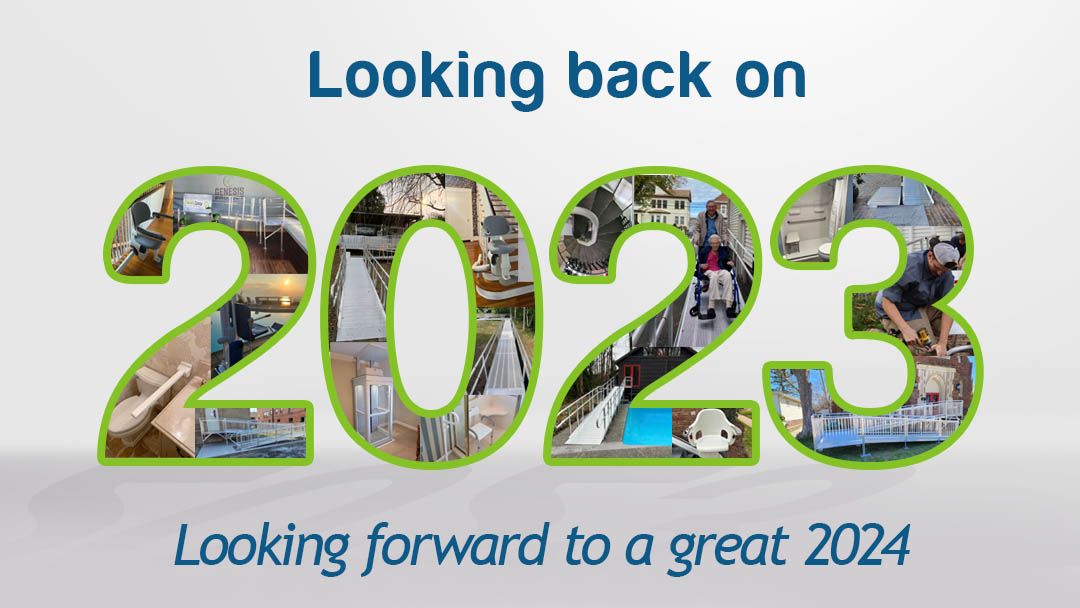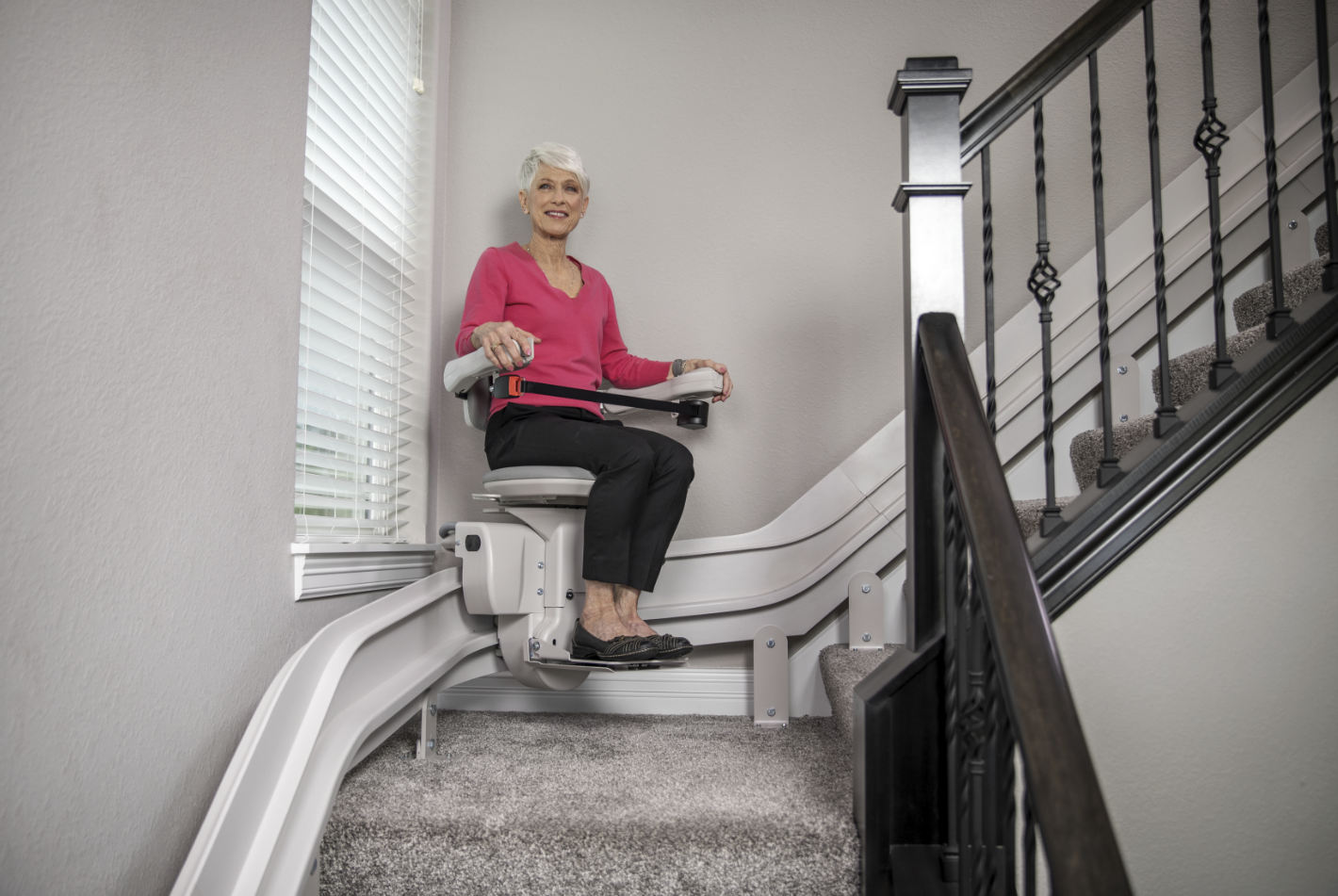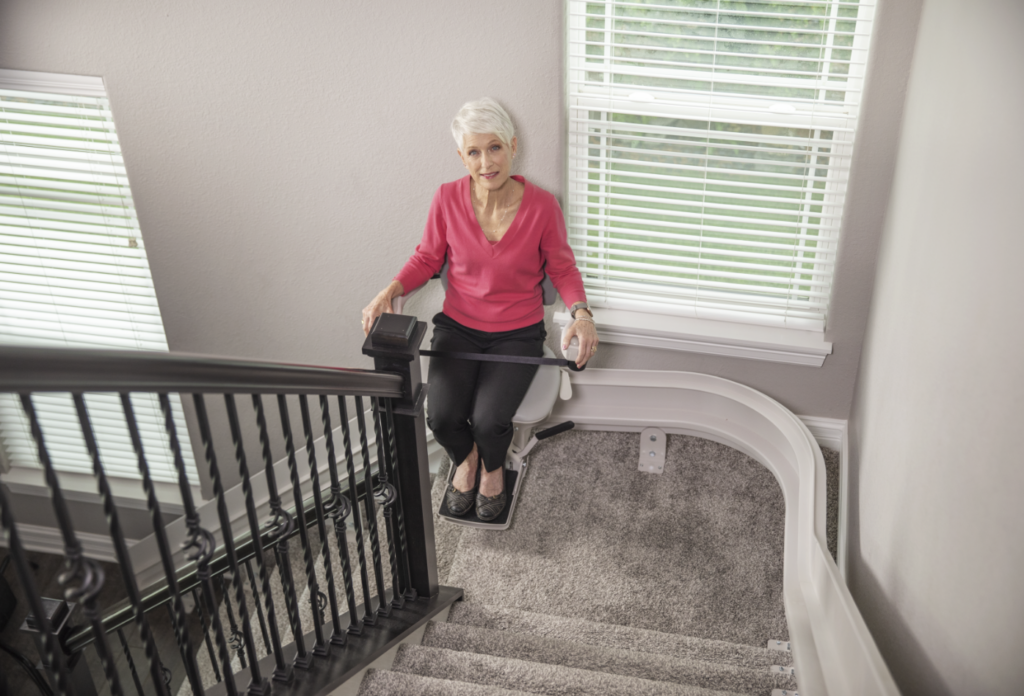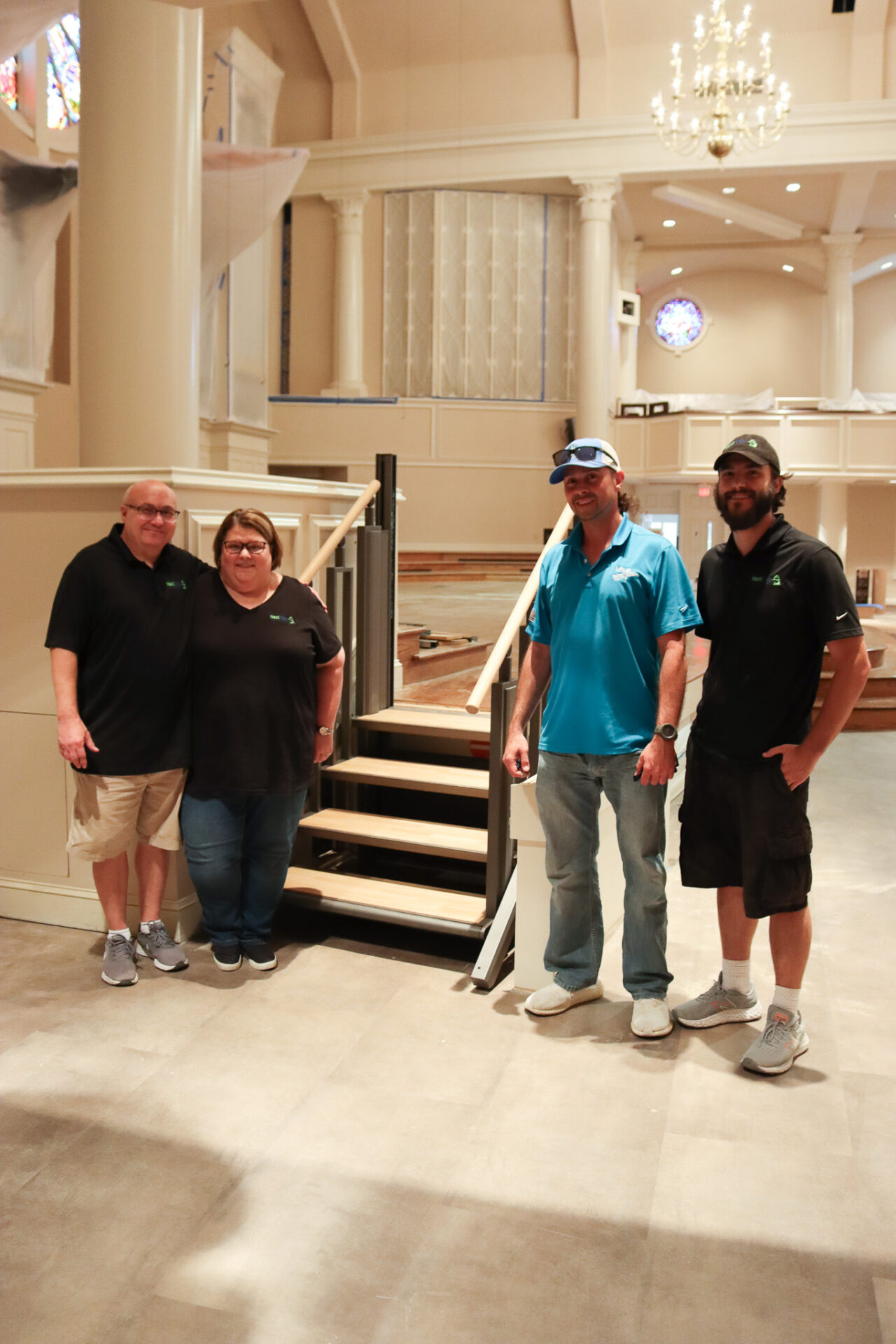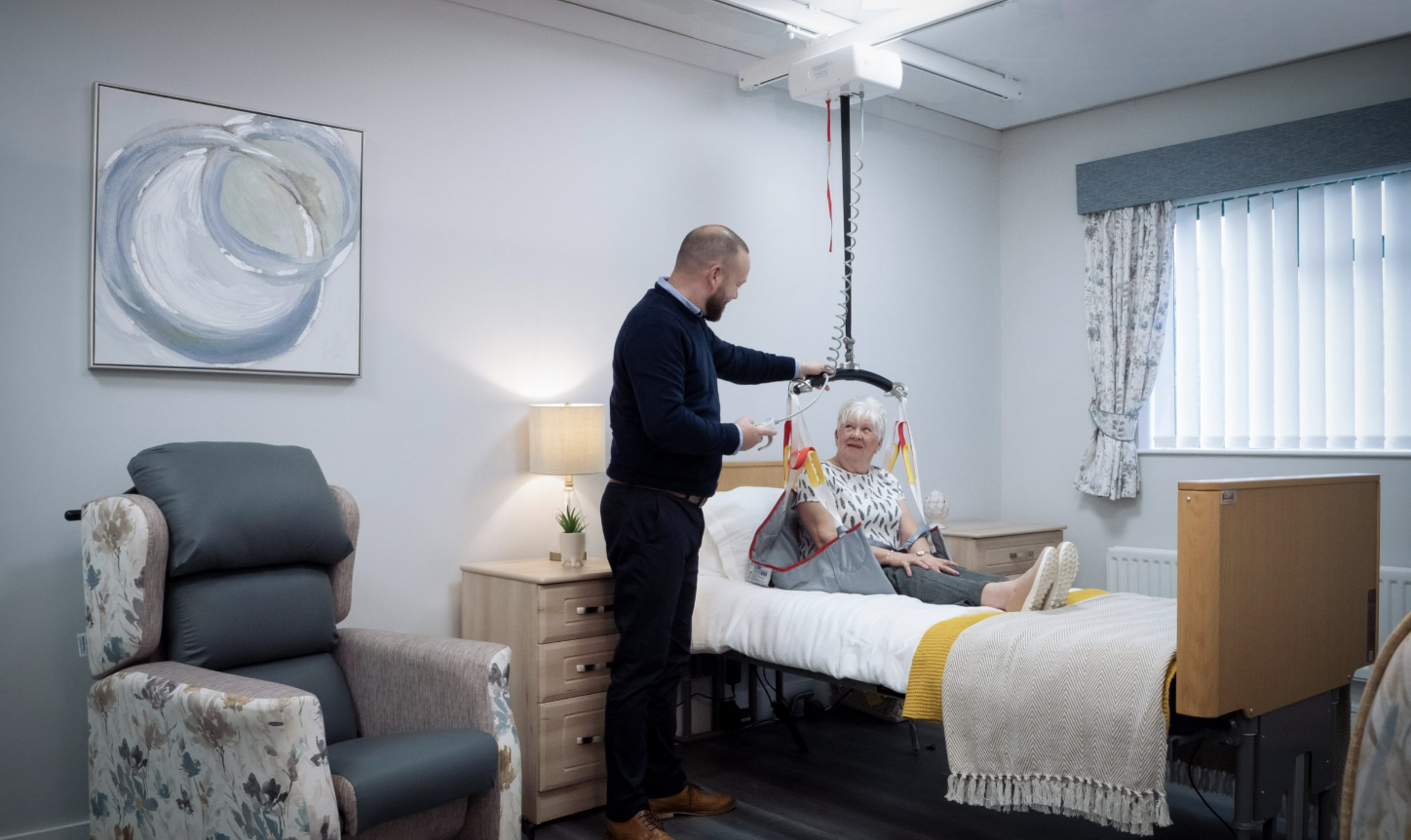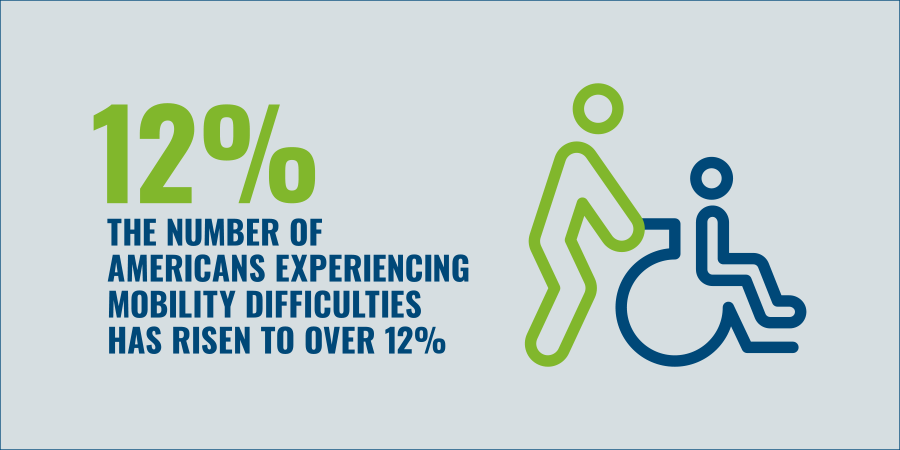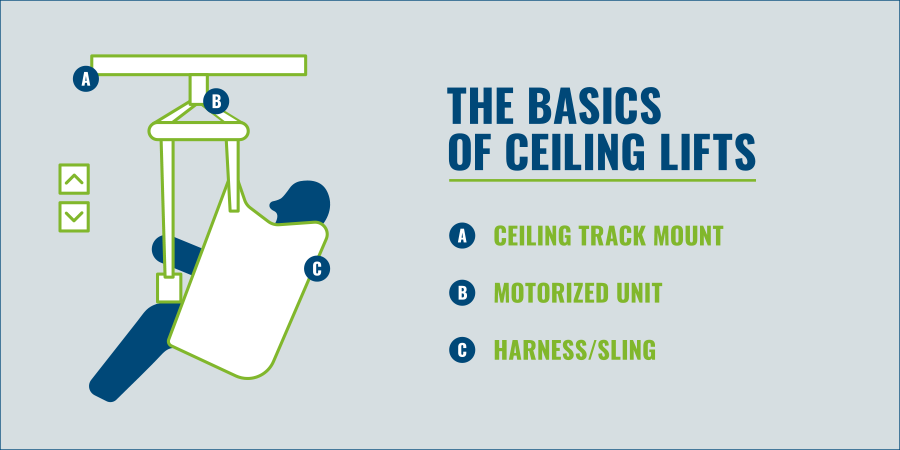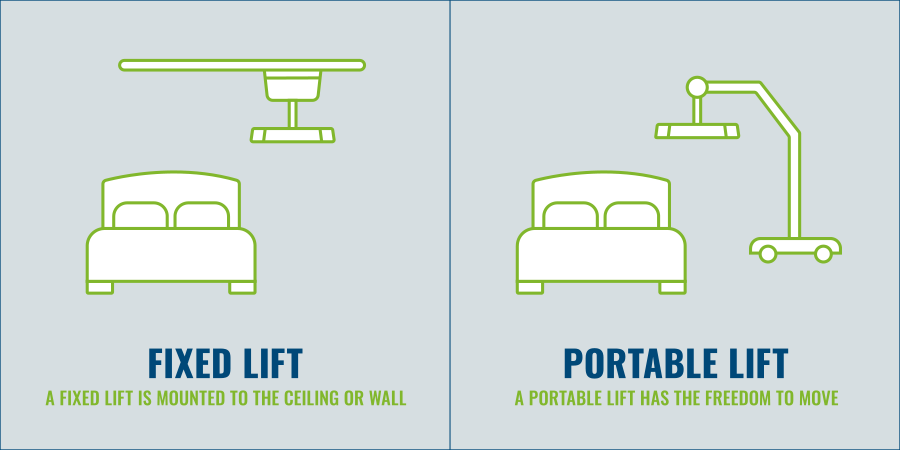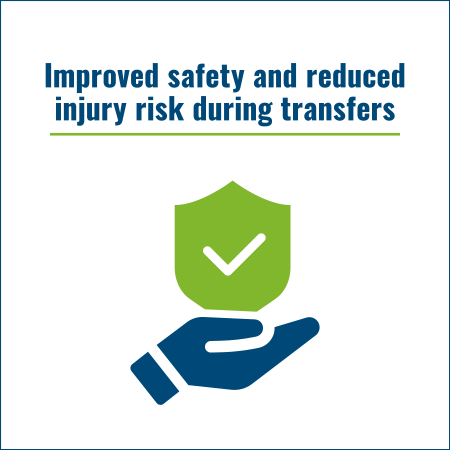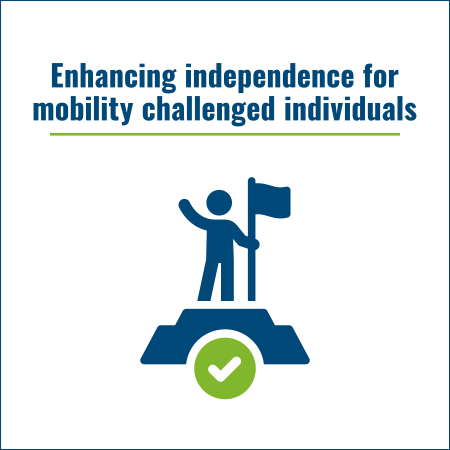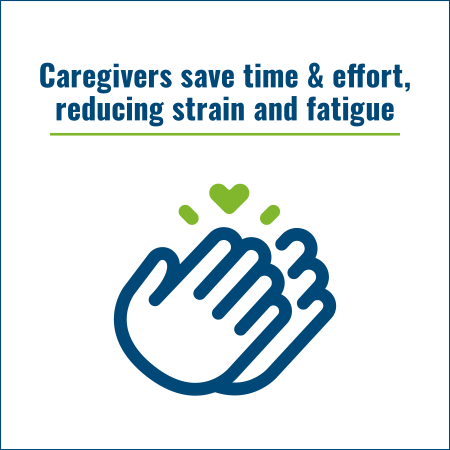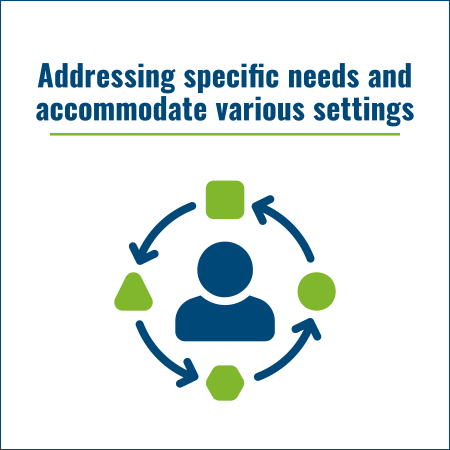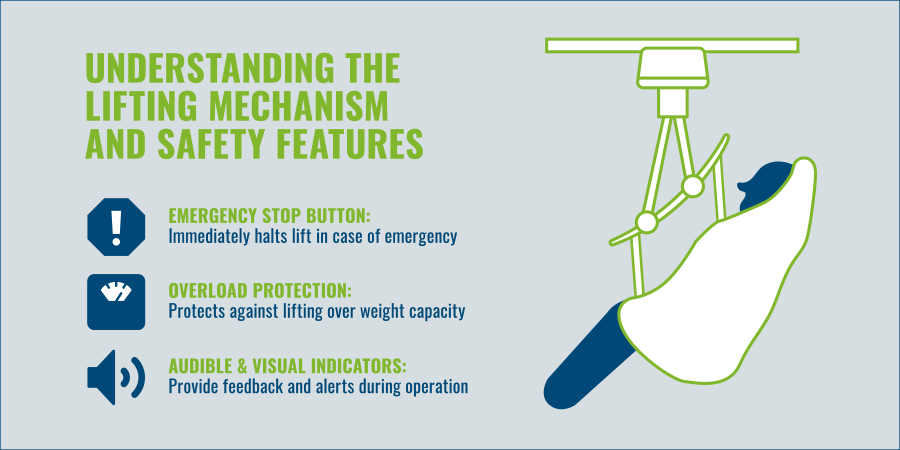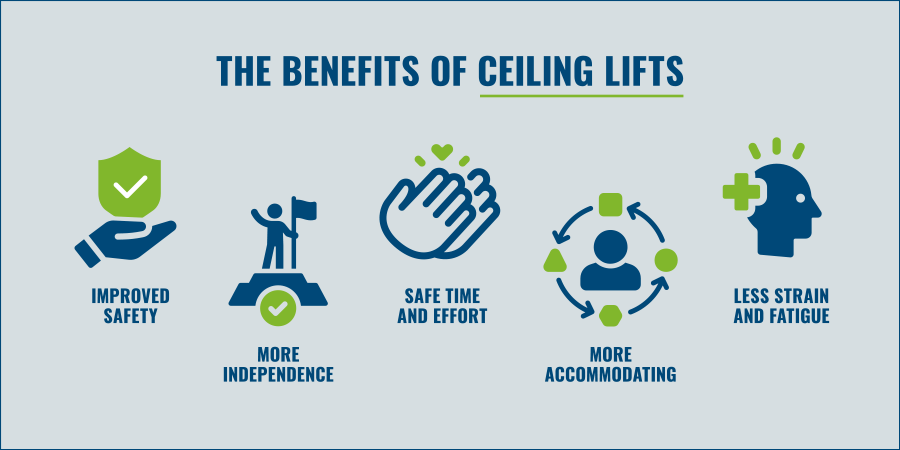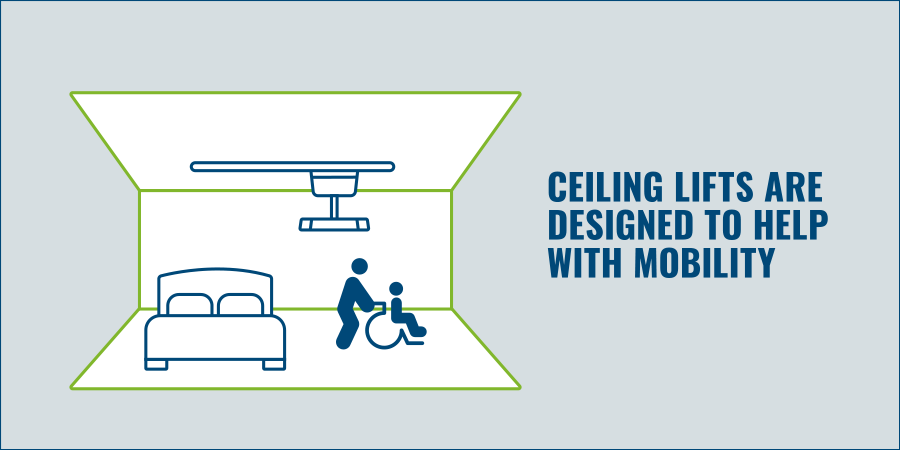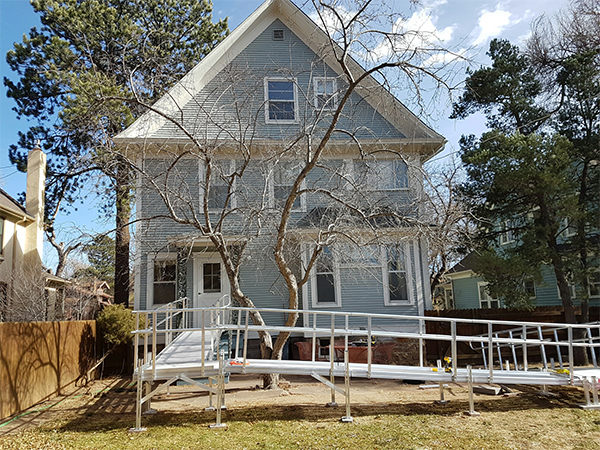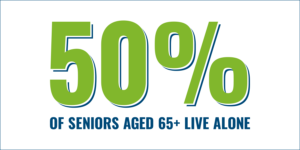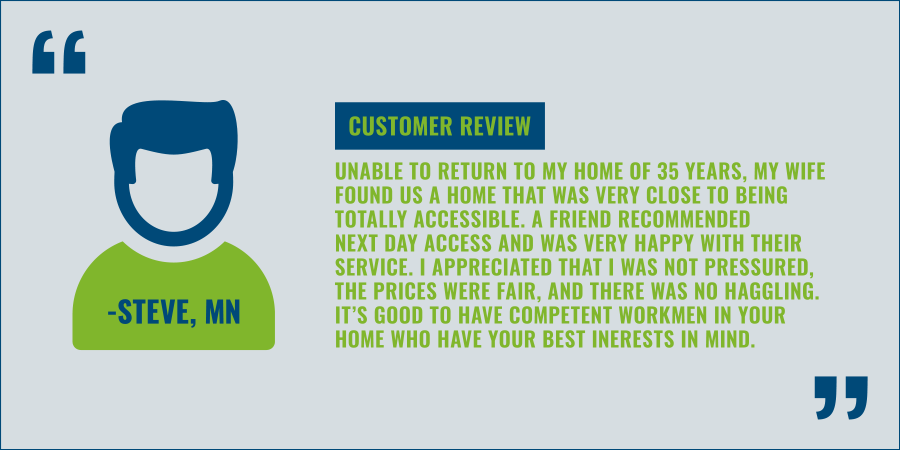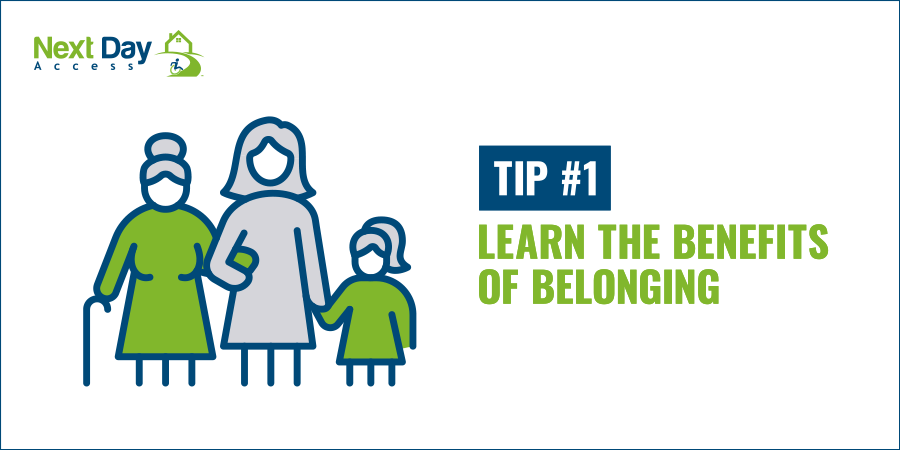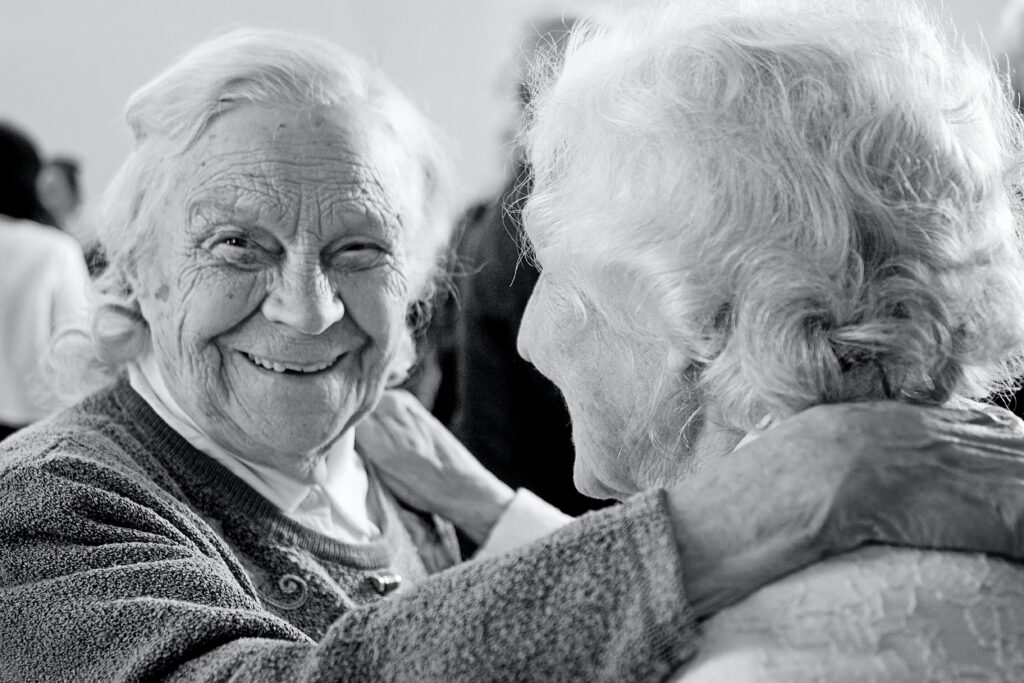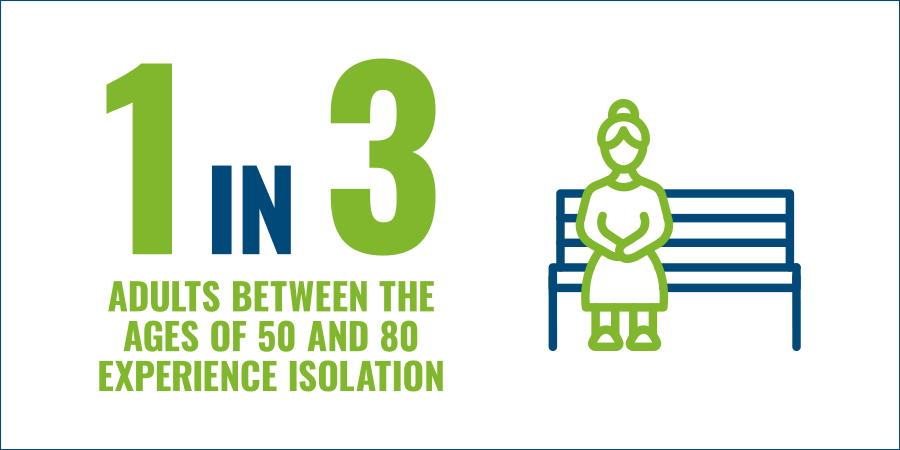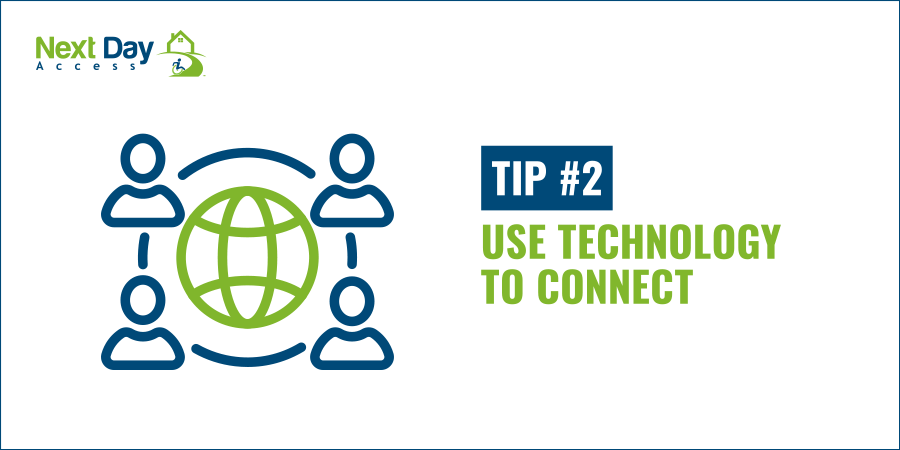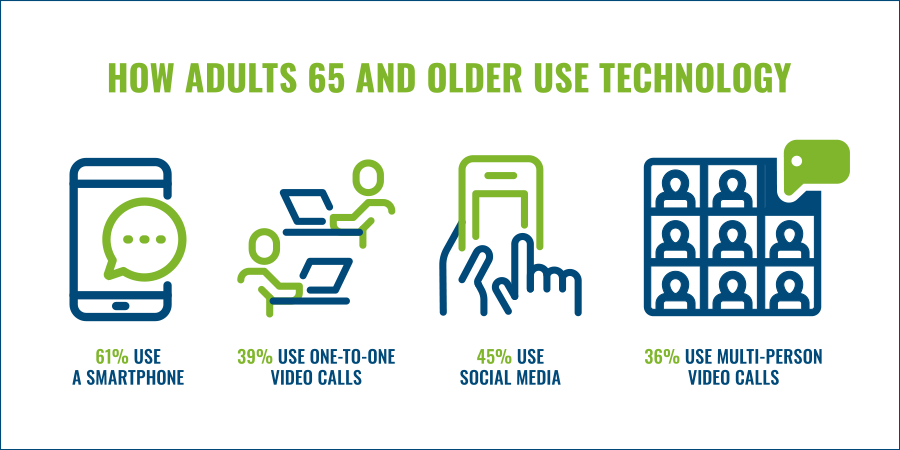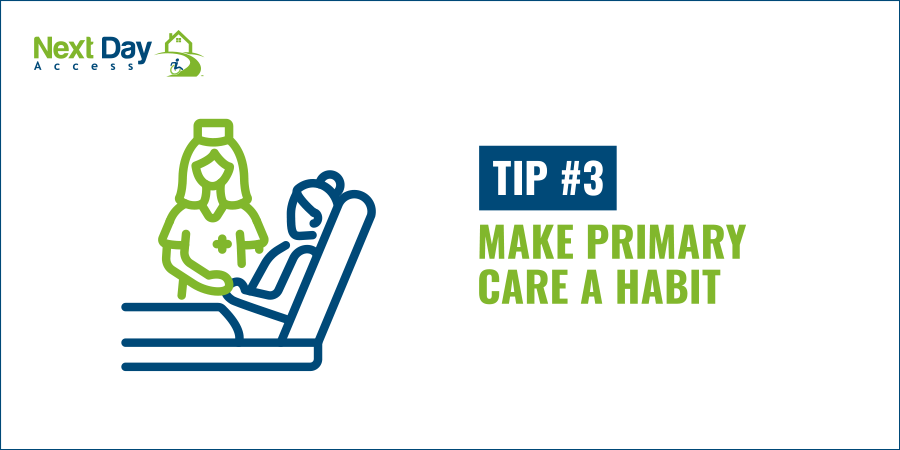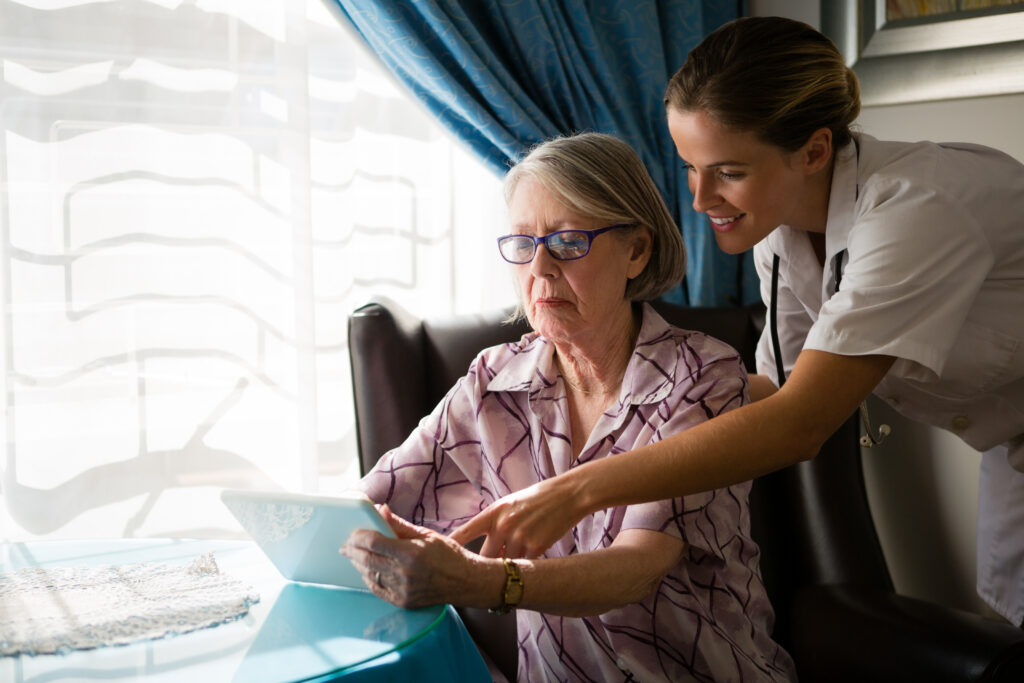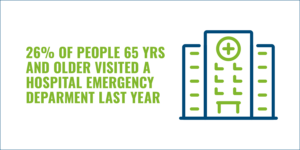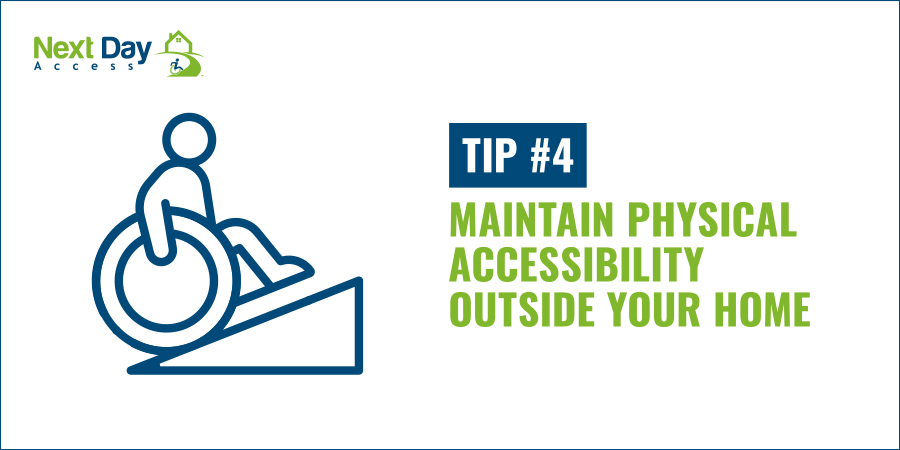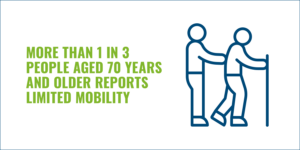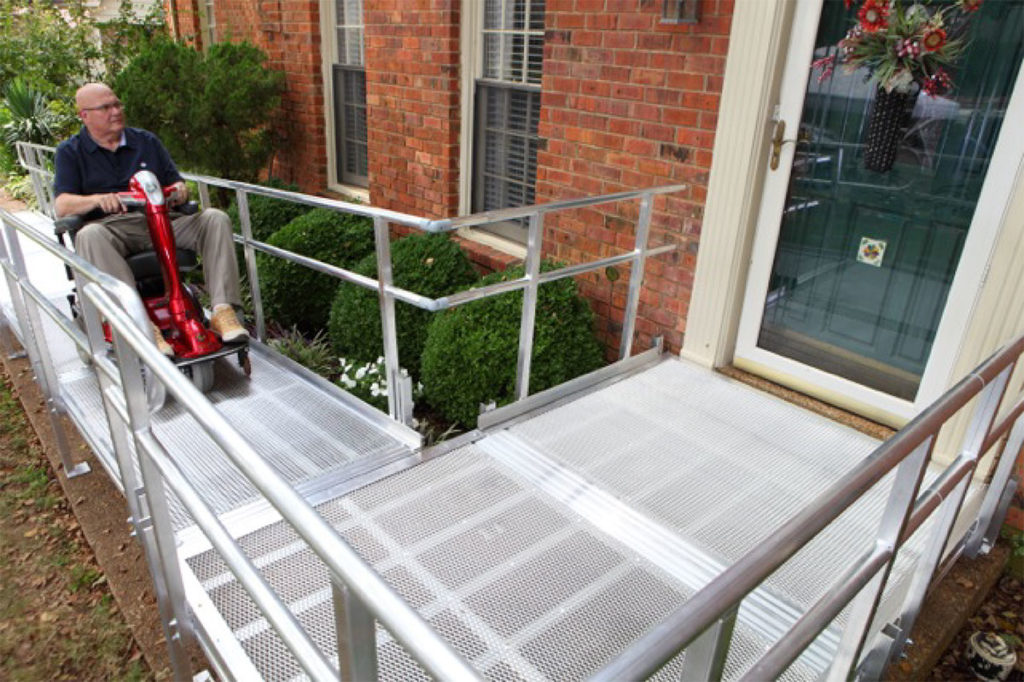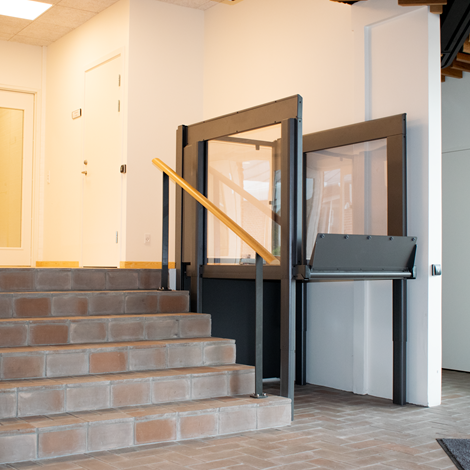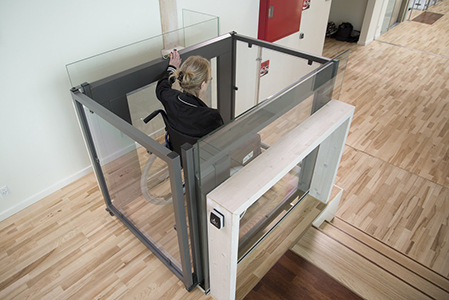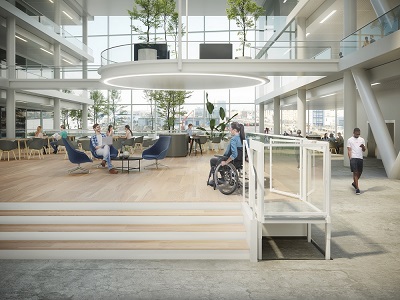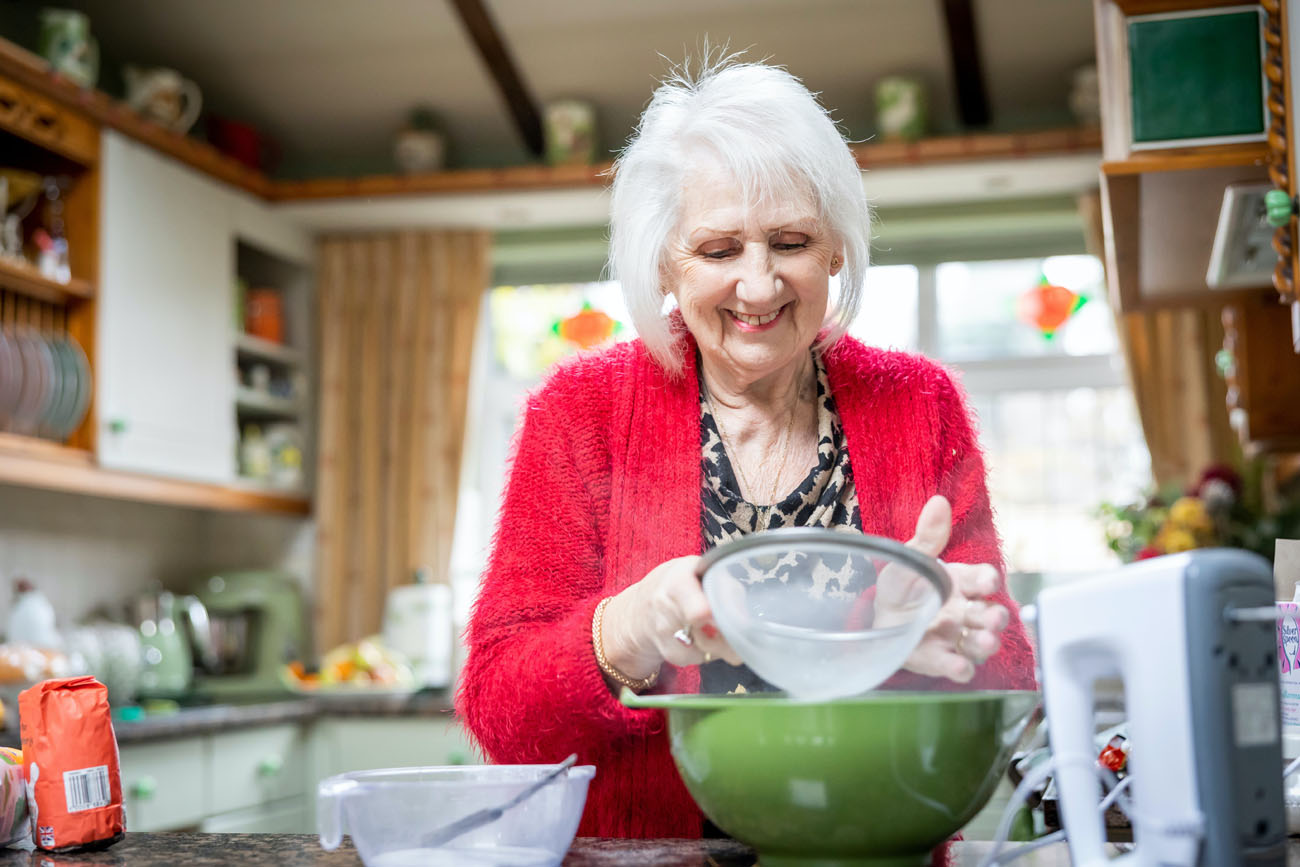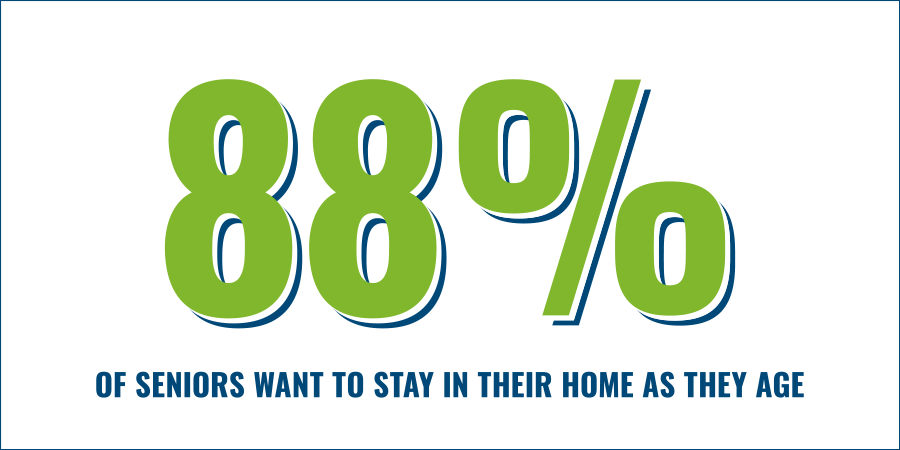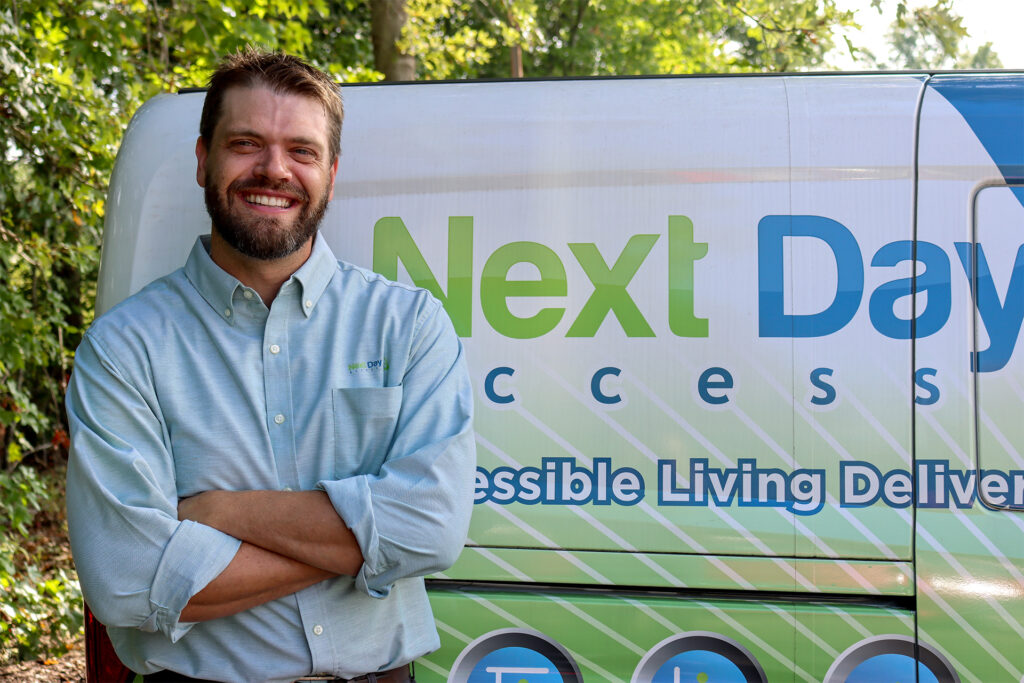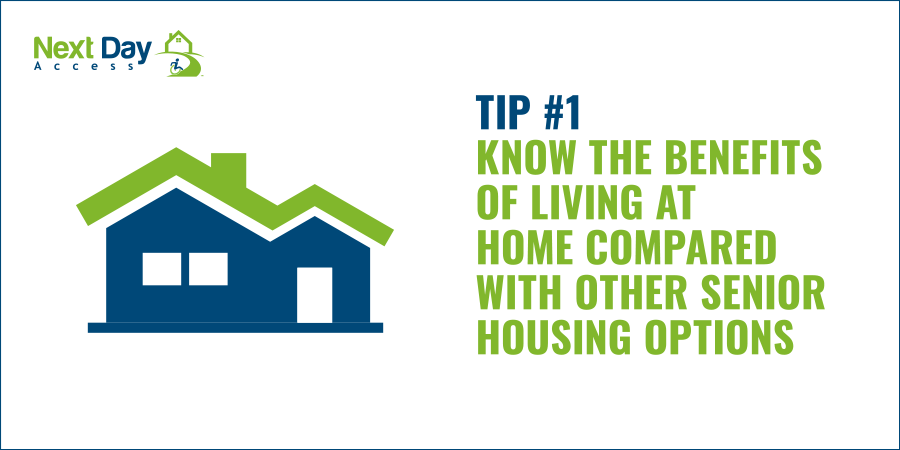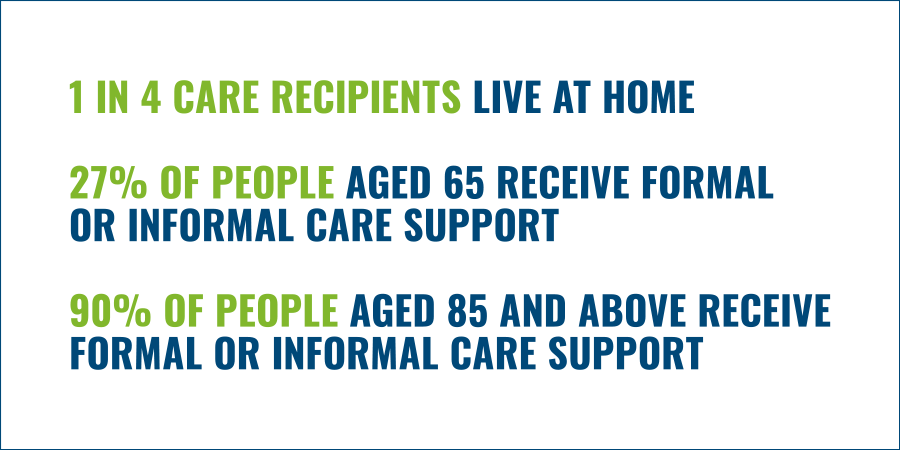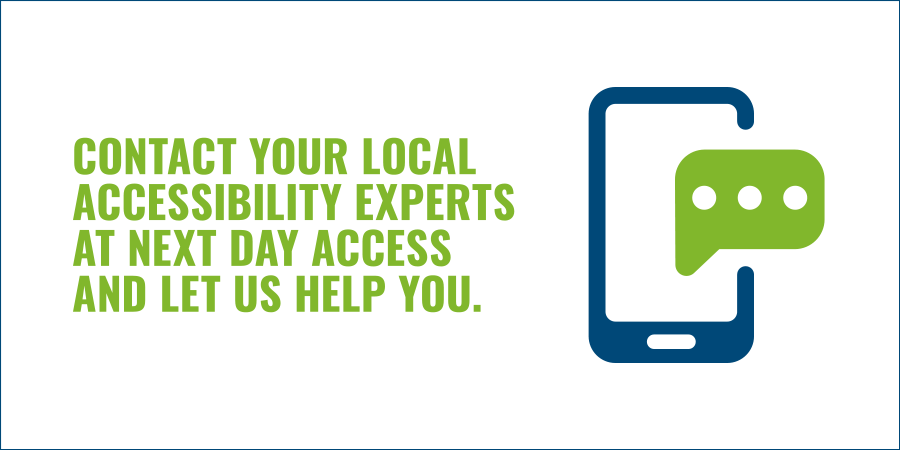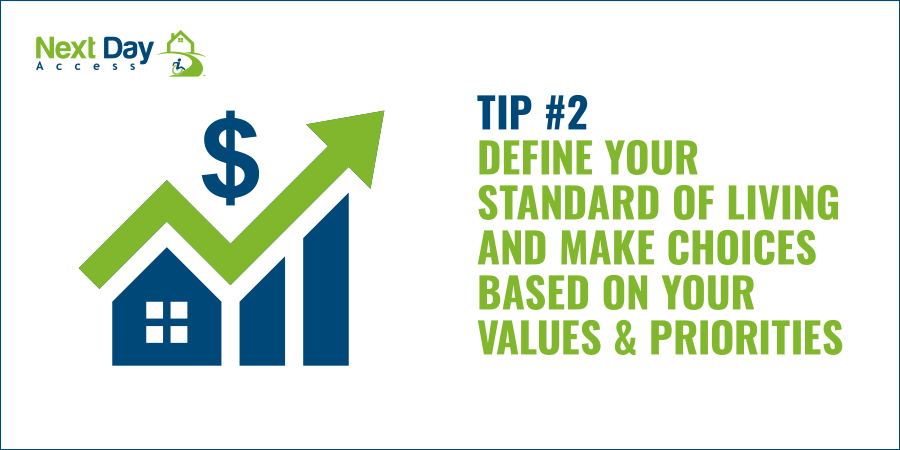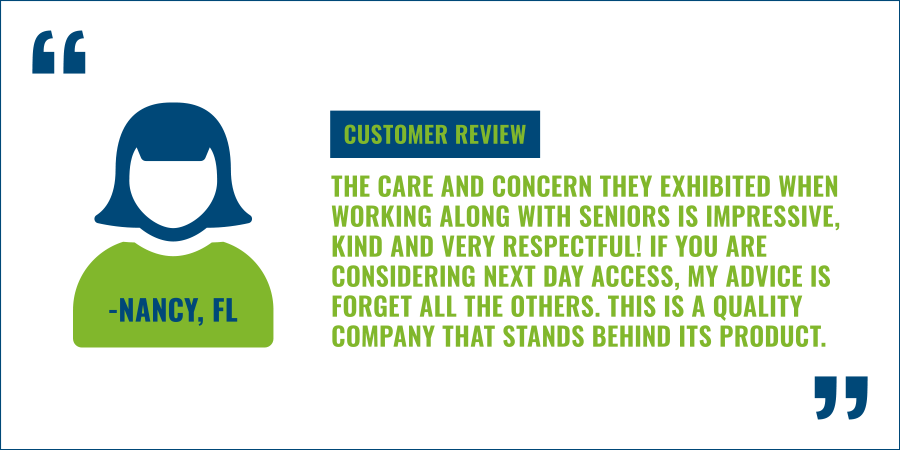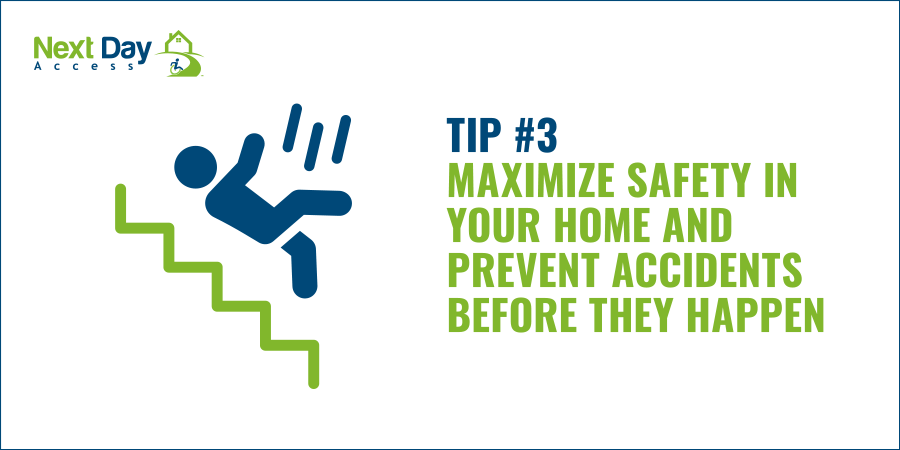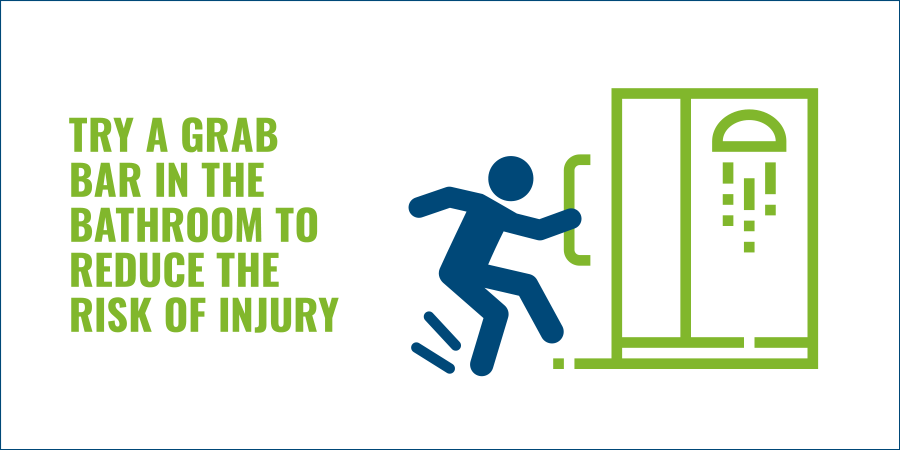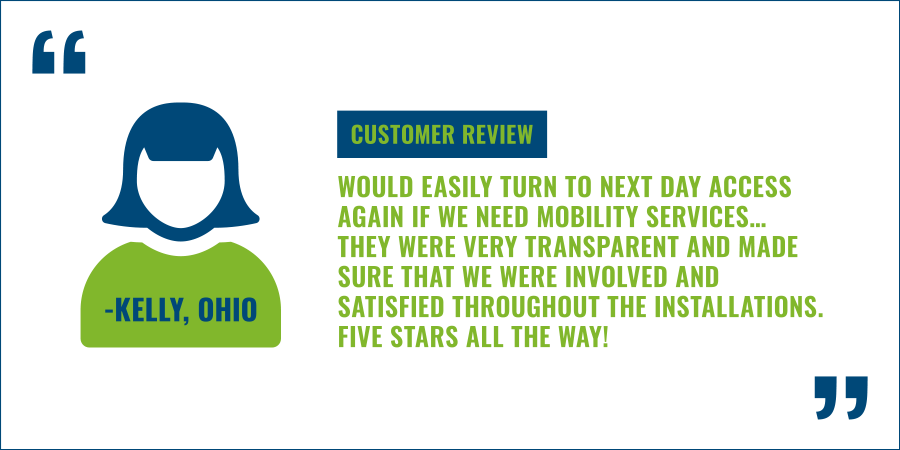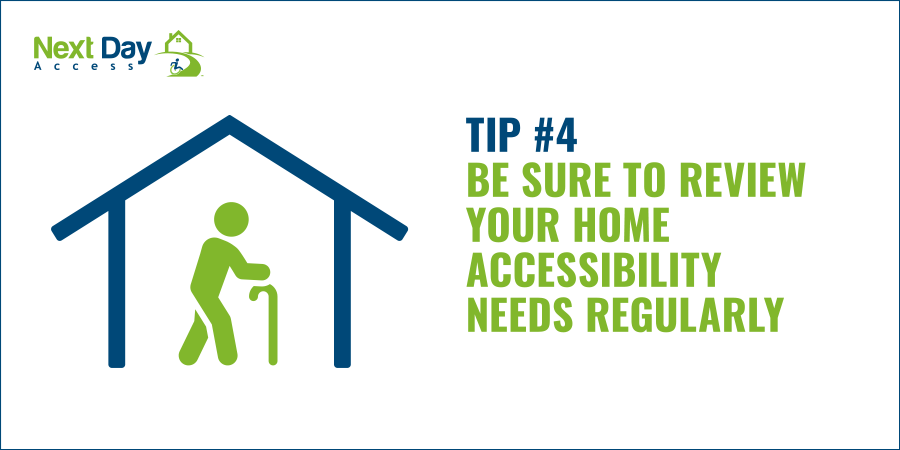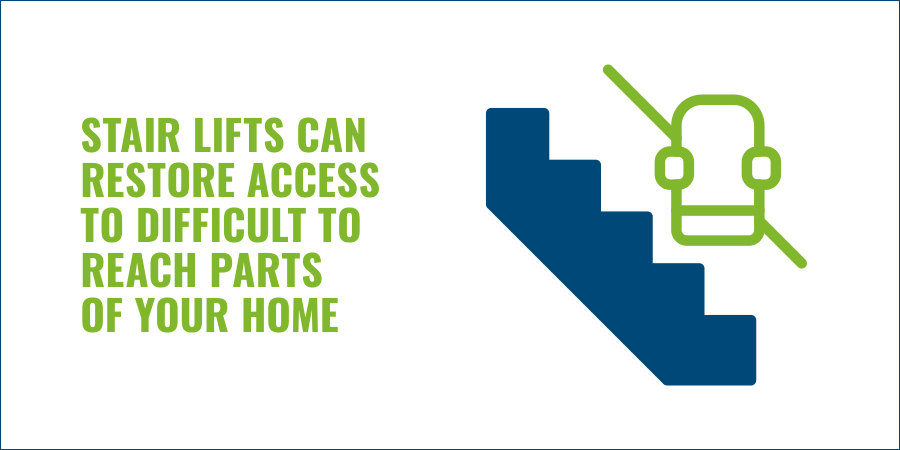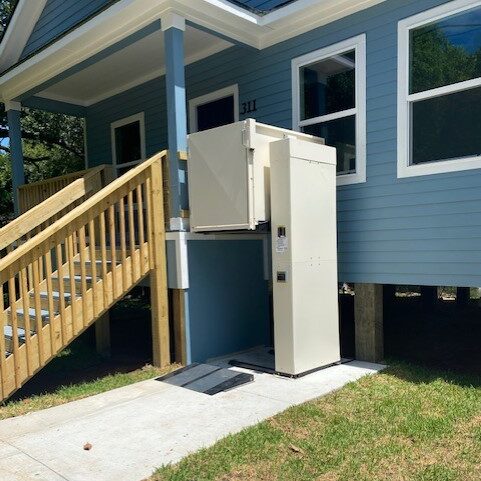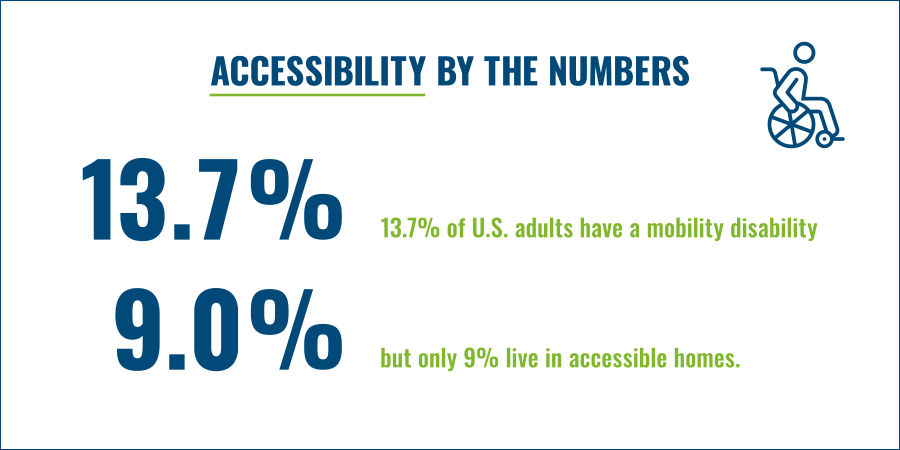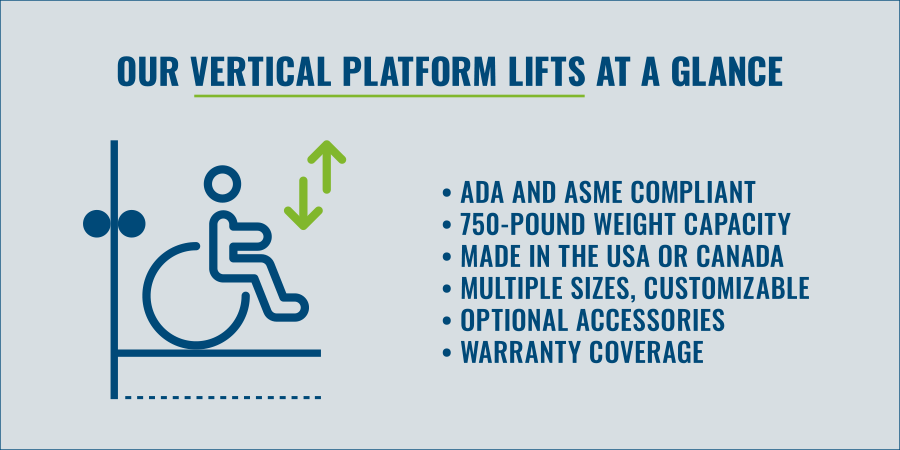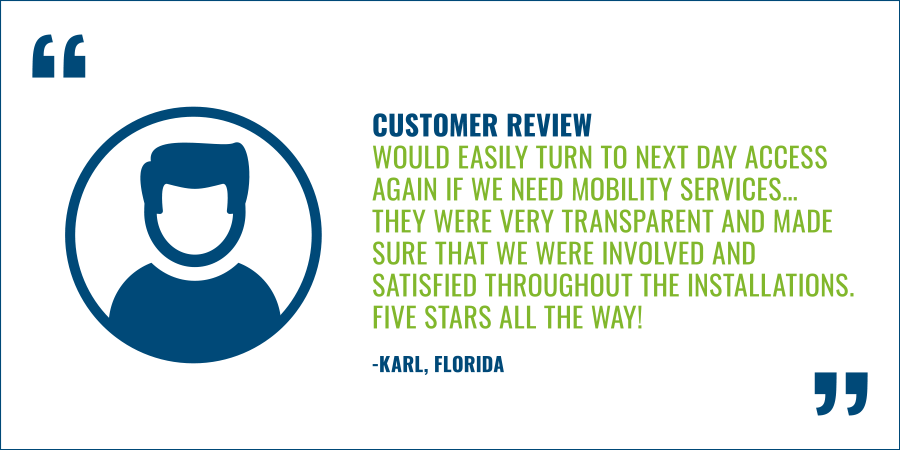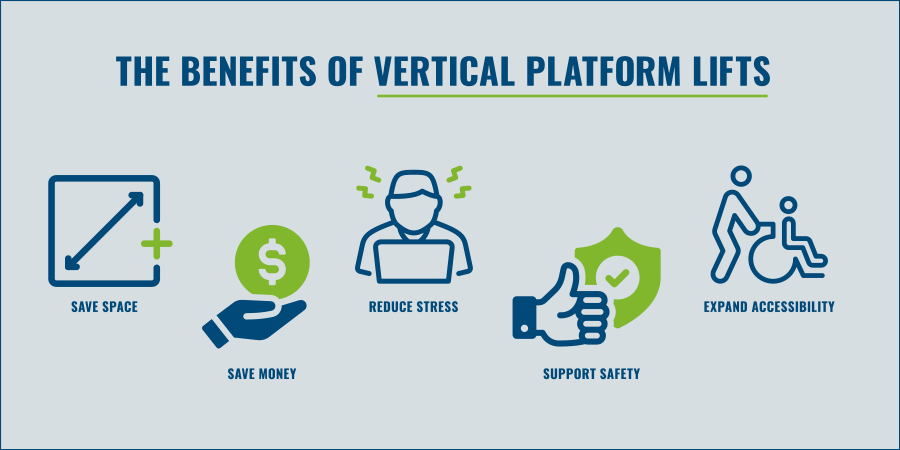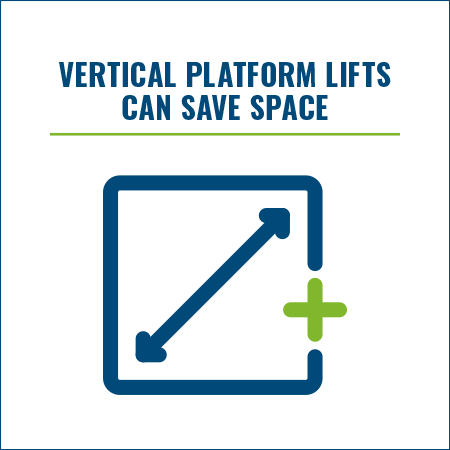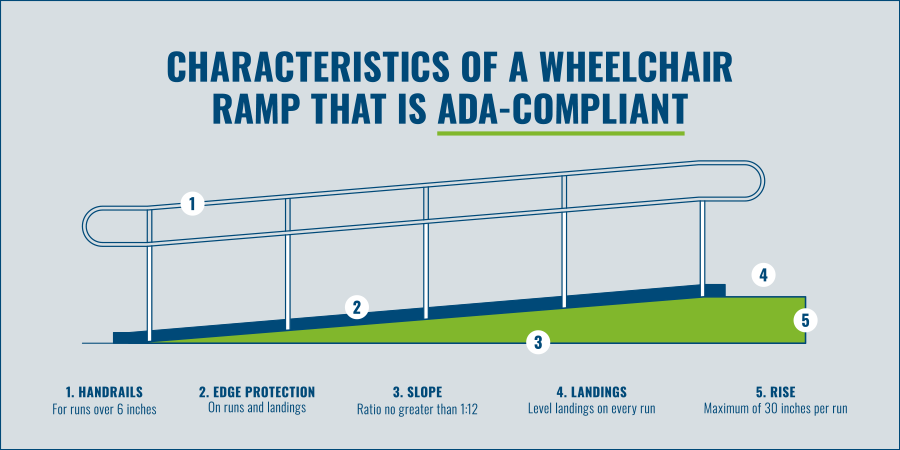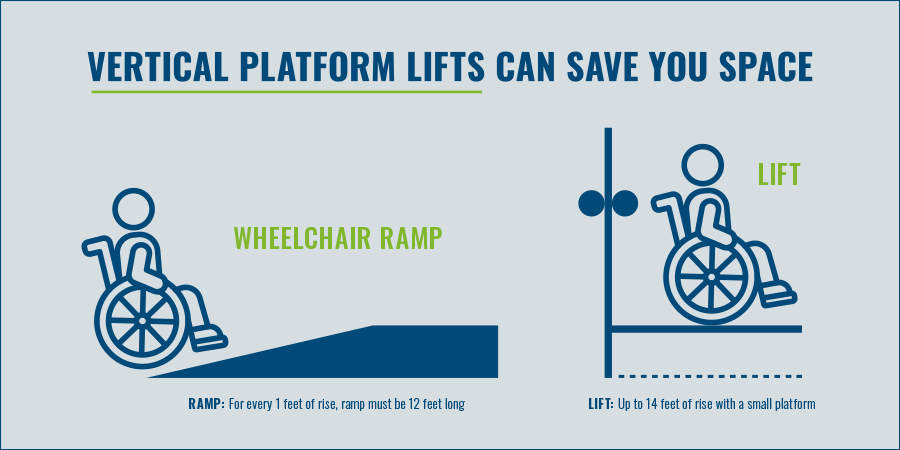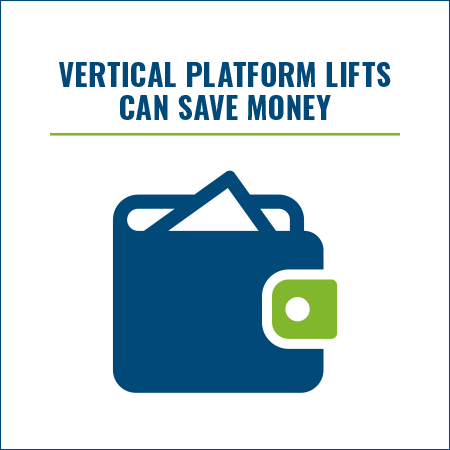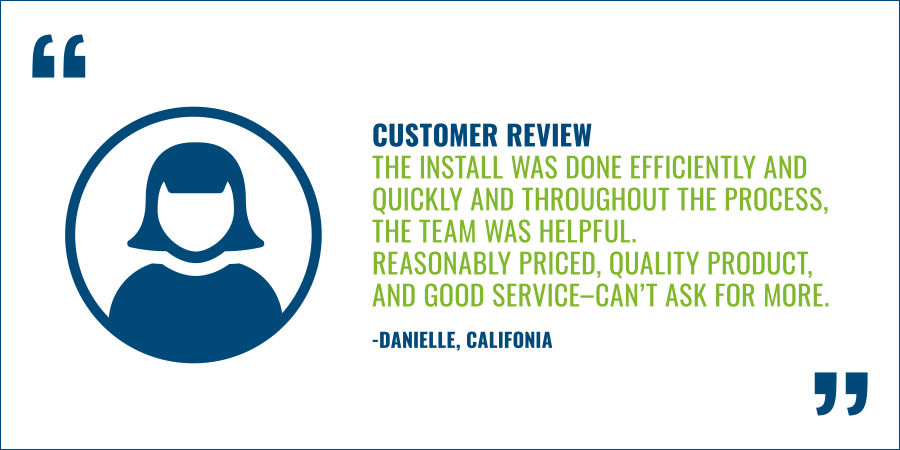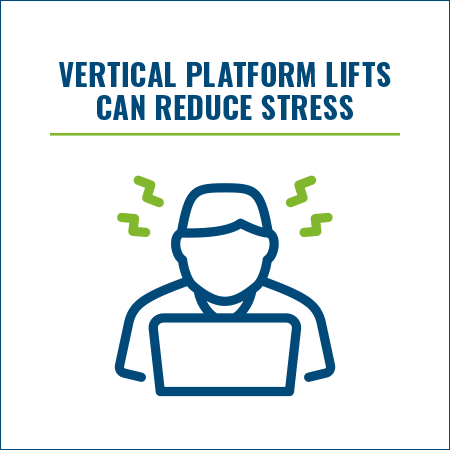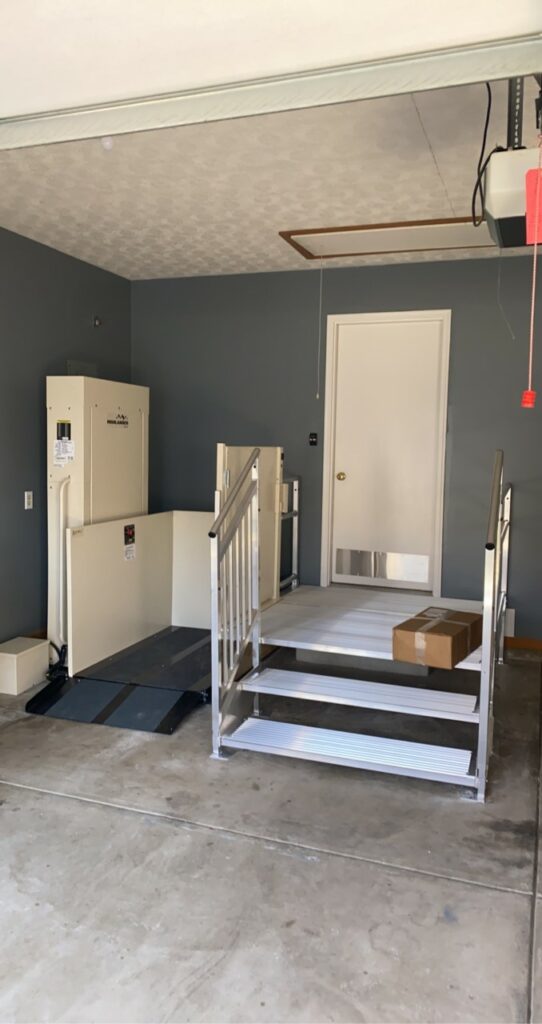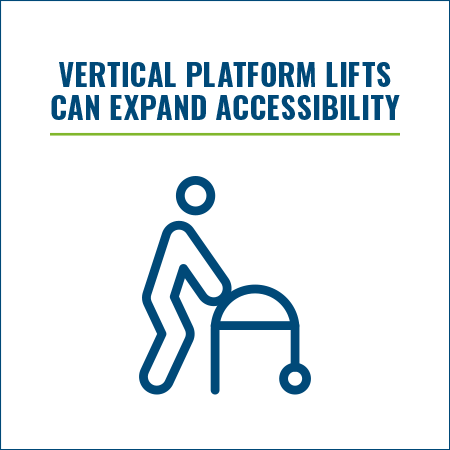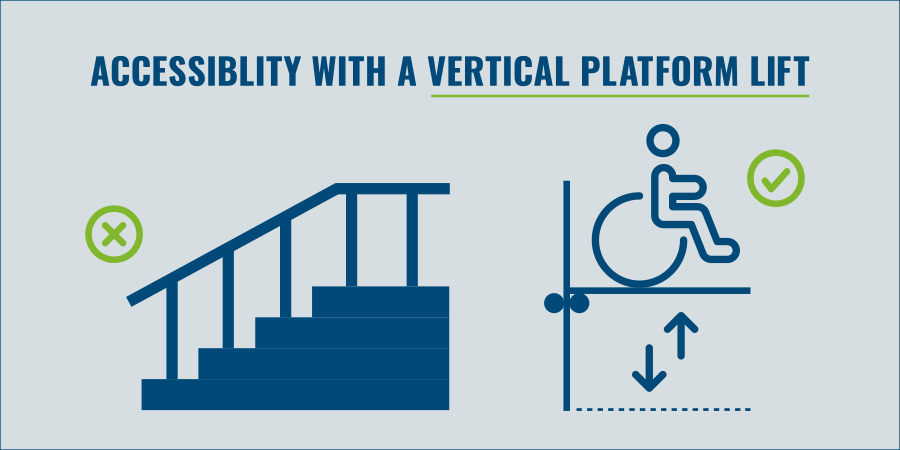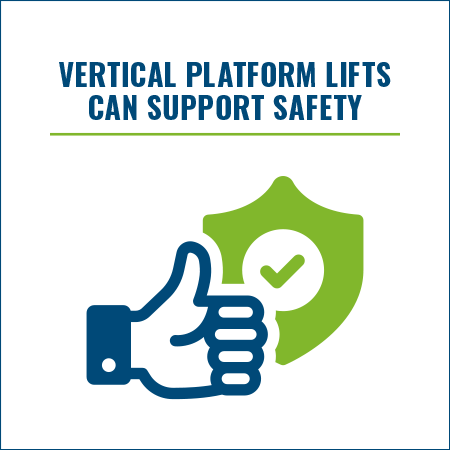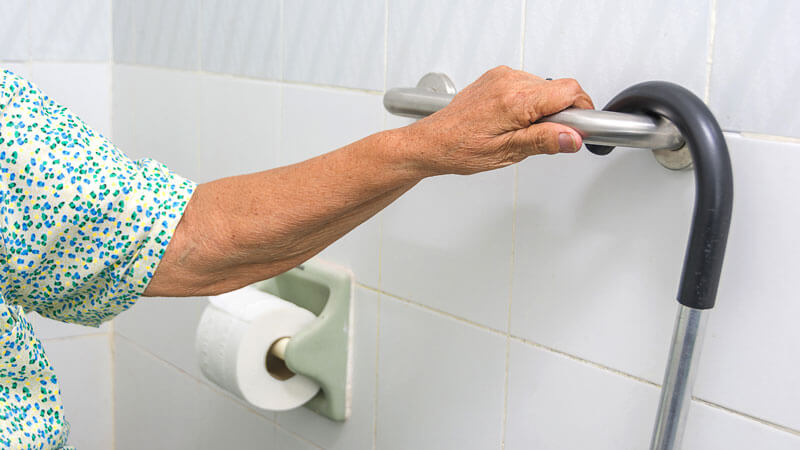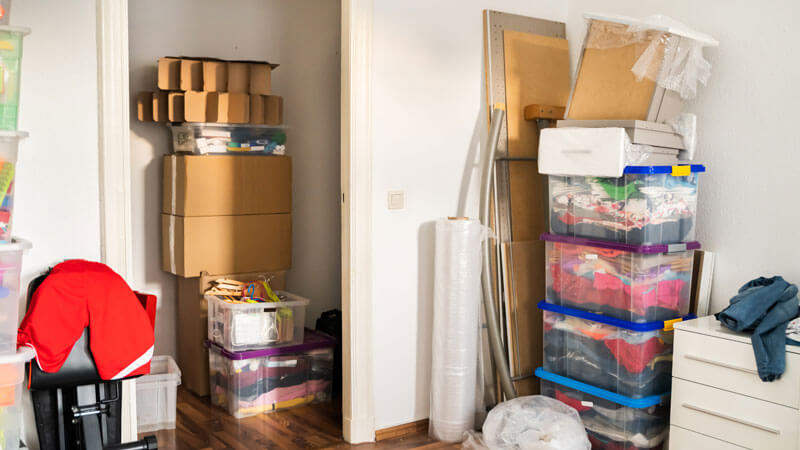
This year has been a memorable journey of launching new partnerships, expanding our mobility solutions, and actively contributing to local communities. These efforts are not just business milestones; they are reflections of our core philosophy—to enhance the lives of those we serve and to create meaningful impacts in every community we touch.
As we pause to celebrate these achievements, we invite you to join us in revisiting the major events, articles, and milestones that have shaped an extraordinary year at Next Day Access. 2023 has been a year marked by innovation, dedication, and a deep-seated commitment to inclusivity and mobility independence.
Furthering Our Commitment to Inclusion and Independence
Reflecting on the key events of 2023 highlights how each one has been a stepping stone towards creating a more inclusive community and providing those with mobility challenges added independence.
A major highlight of the year was the introduction of the EasyLift by LiftUp, an innovative platform lift designed to improve mobility and accessibility. This product represents a significant advancement in the field, providing access between two levels for wheelchair users and individuals with impaired mobility and walking restrictions. It can be installed both indoors and outdoors, providing access for varying height layers. The lift’s sleek design is not only simple and stylish but also highly functional, catering to the needs of its users with ease.
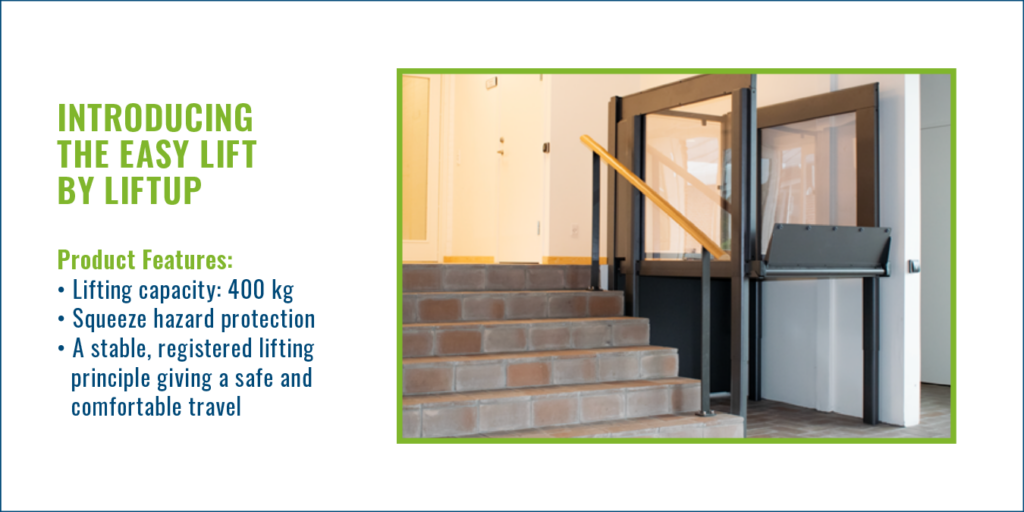
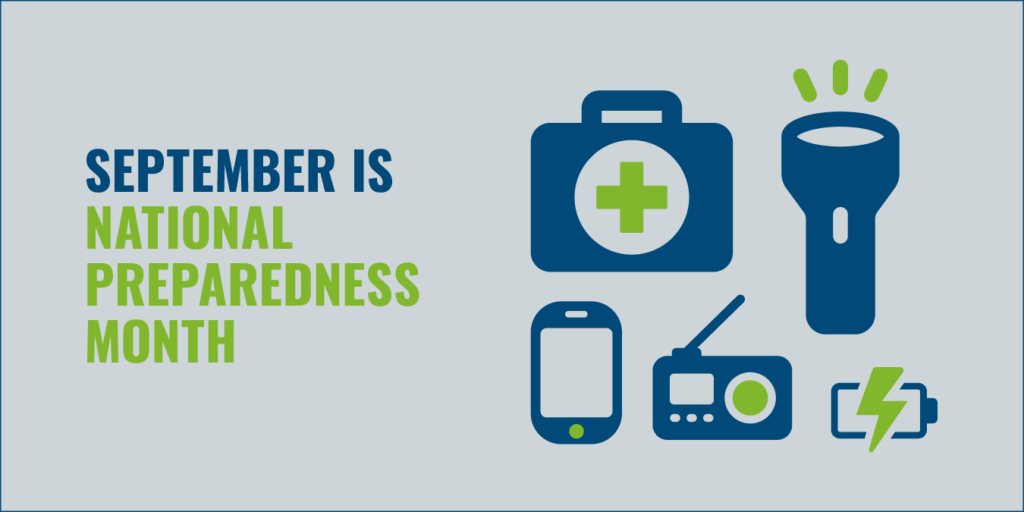
In September, during National Preparedness Month, we promoted the crucial role mobility solutions play in emergency preparedness. This month-long event allowed us to showcase key mobility solutions vital for emergencies, especially for individuals facing mobility challenges. Our focus was on educating the public about the importance of preparedness and how our products can provide assistance in such situations.
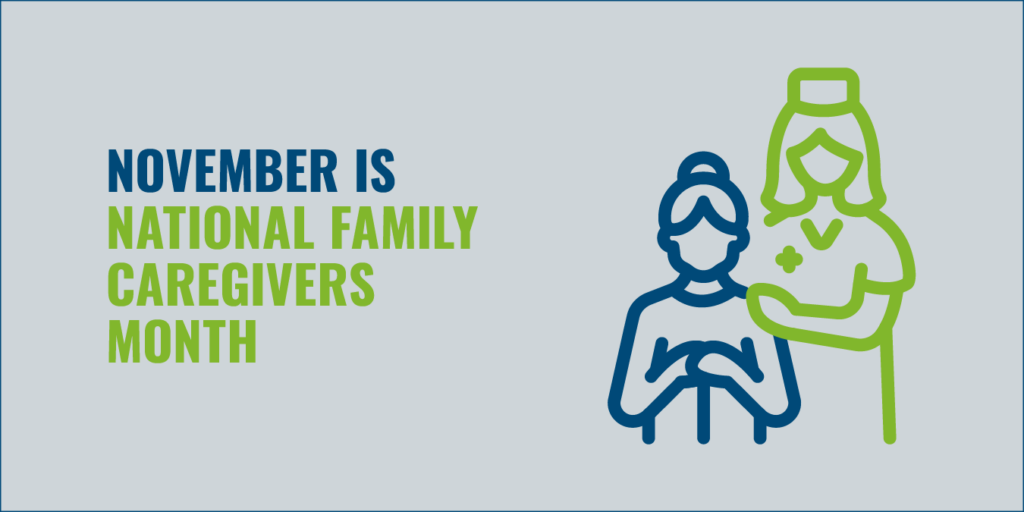
During November, Next Day Access paid tribute to National Family Caregivers Month, recognizing the invaluable efforts of caregivers. The company highlighted the heroes of mobility and assistance, acknowledging the dedication and hard work of those who support family members with mobility needs. This celebration aligned perfectly with the Next Day Access’s mission to not only provide mobility solutions but also to support and uplift the caregivers who play a crucial role in the lives of those with mobility challenges.
Celebrating New Next Day Access Locations

We believe that exceptional service is built on the foundation of convenience and genuine connections that create personalized customer experiences. This commitment to excellence has not only driven our expansion but has also been recognized industry-wide, with Next Day Access being named a top brand by Franchise Journal for 2023.
The company expanded its reach significantly this year, opening 7 new franchise locations across North America. As we celebrate these new openings, we look forward to seeing the positive impact they will continue to have in their respective regions. Here’s a look at each new location and what they bring to their communities.
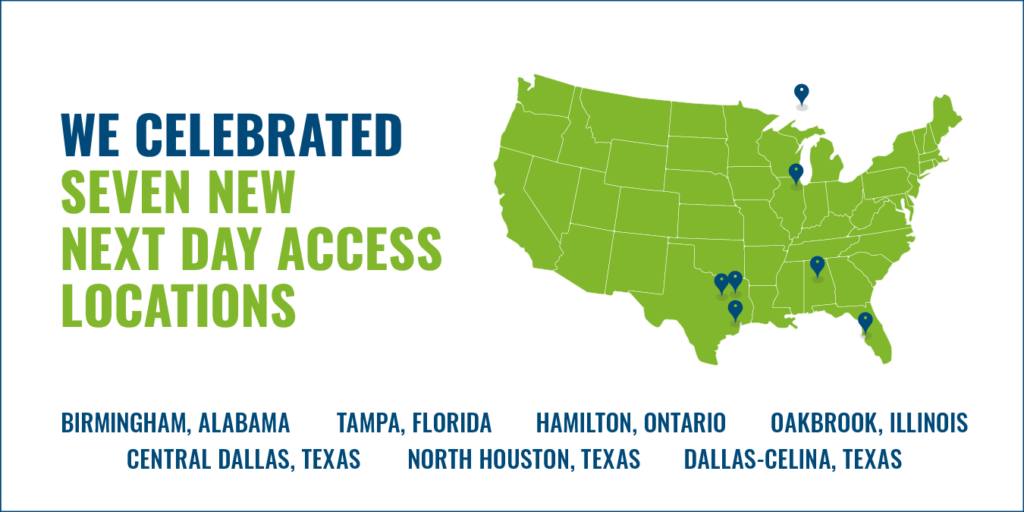
Birmingham, AL
Next Day Access Birmingham marked the company’s first venture into Alabama. Opened in October 2023 by Amy and Scott Riley, this franchise is dedicated to serving the Greater Birmingham area with a range of accessibility products. Amy’s background in senior care and Scott’s business acumen combine to offer a compassionate and knowledgeable approach to mobility solutions.

Tampa, FL
In Tampa, Florida, Next Day Access Tampa began operations in October 2023. Owned by Josh Kearns, a figure in wheelchair rugby and advocate for underserved communities, this franchise emphasizes personalized service and a deep understanding of mobility needs. Josh’s unique background and commitment to accessibility make this location a valuable asset to the Tampa area.
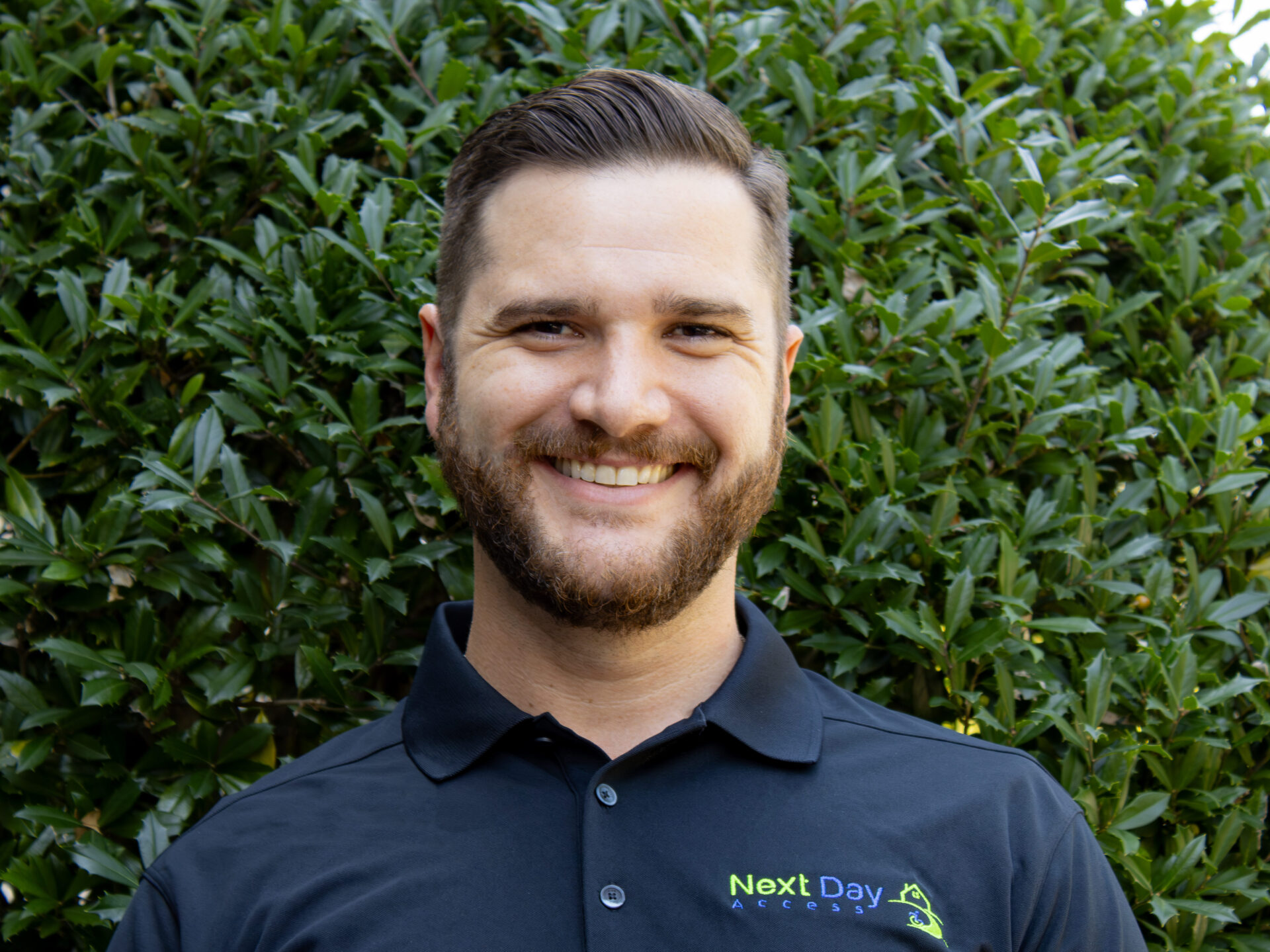
Central Dallas, TX
Next Day Access Central Dallas, which opened in September 2023, is the fourth Texas development for the company. Owned by Dave and Phairat Rice, the franchise brings a wealth of experience in business and a personal touch to the Dallas market, offering a wide range of mobility solutions for aging safely at home.


North Houston Expansion to Katy, TX
Next Day Access North Houston expanded its operations into Katy, Texas in August 2023. This expansion, under the leadership of Brian Week, has allowed the franchise to serve a broader customer base and provide more efficient, improved customer service in the Greater Houston area.

Dallas-Celina, TX
In May 2023, Next Day Access Dallas-Celina opened its doors. Owned by Brien and Lesli Caldwell, this franchise is driven by a personal connection to mobility challenges. Their dedication to finding the best solutions for their customers’ needs has already made a significant impact on the local community.
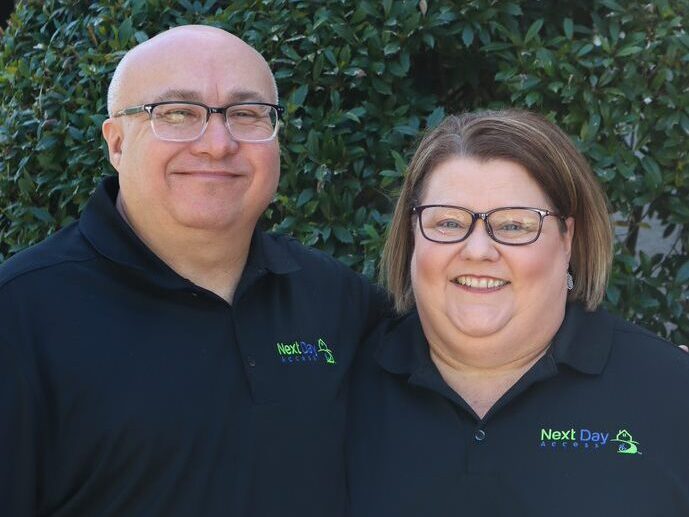
Hamilton, ON
March 2023 saw the opening of Next Day Access Hamilton in Ontario, Canada. Owned by Joel Varghese, this franchise is the fourth Canadian location for Next Day Access. Joel’s business background and commitment to the aging-in-place industry have been pivotal in providing better living experiences for people with limited mobility in Hamilton and surrounding areas.

Oak Brook, IL
Next Day Access Oak Brook in Illinois, owned by Sakher Almakhamreh, opened to serve the local communities with a range of accessibility and mobility solutions. Sakher’s diverse background and commitment to helping the community make this franchise a valuable addition to the Oak Brook community.

Every new franchise location actively contributes its unique blend of expertise, compassion, and dedication to its community. This supports the Next Day Access’s mission to enable people to live safely, comfortably, and independently in their homes. As we look ahead to 2024, Next Day Access plans to grow its franchise network further. This expansion will bring quality mobility solutions to even more communities, boosting our capacity to serve a diverse range of clients.
Mobility Solutions and Accessibility Tips: Top Trending Articles
Throughout 2023, Next Day Access has been at the forefront of providing valuable insights and tips to enhance mobility and safety in various aspects of daily life. Here’s a look at the 8 most-read articles shared by the company:
1. Preventing Bathroom Injuries
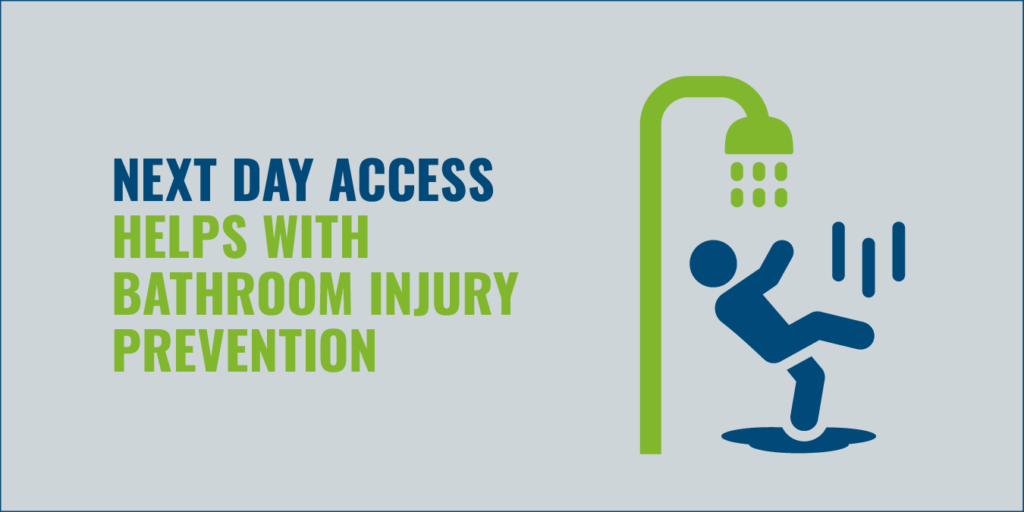
Bathrooms are a common location for injuries, especially for those with mobility challenges. Next Day Access highlighted the five most common bathroom injuries, such as slips and falls, and provided easy to implement recommendations to prevent them. The article highlights the importance of installing accessibility products like grab bars, non-slip mats, and shower seats. These budget-friendly modifications not only minimize risks but also promote a safer, more comfortable bathroom environment.
2. Choosing the Perfect Stairlift
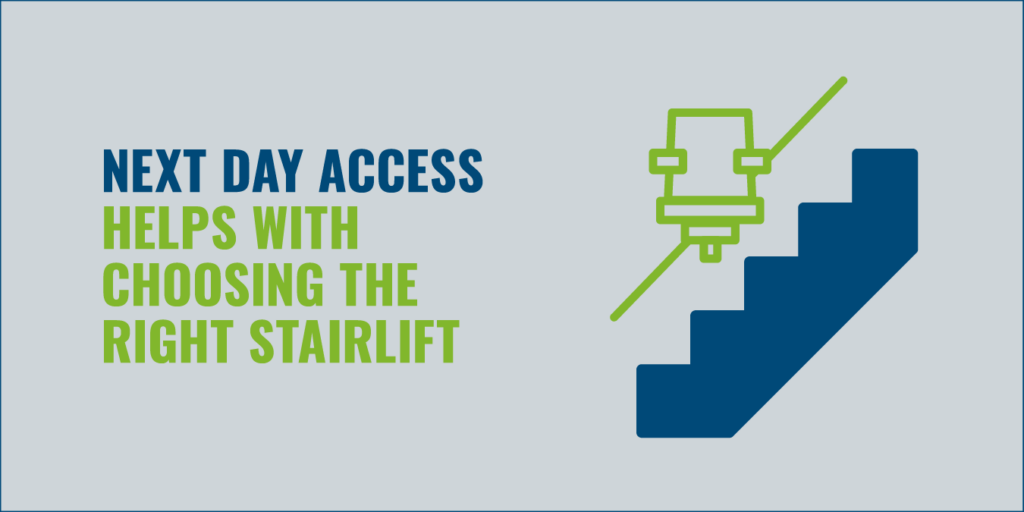
Stairlifts have grown in popularity for homes and for good reason. Improving home mobility, they provide safe and easy access to different levels of a home. Next Day Access offered comprehensive guidance on selecting the best stairlift solution, considering factors like stairway design, user needs, and budget. The article covered a range of options, from indoor to outdoor stairlifts, helping readers to choose a stairlift that best fits their home layout and personal mobility requirements.
3. Pool Lifts for Accessibility
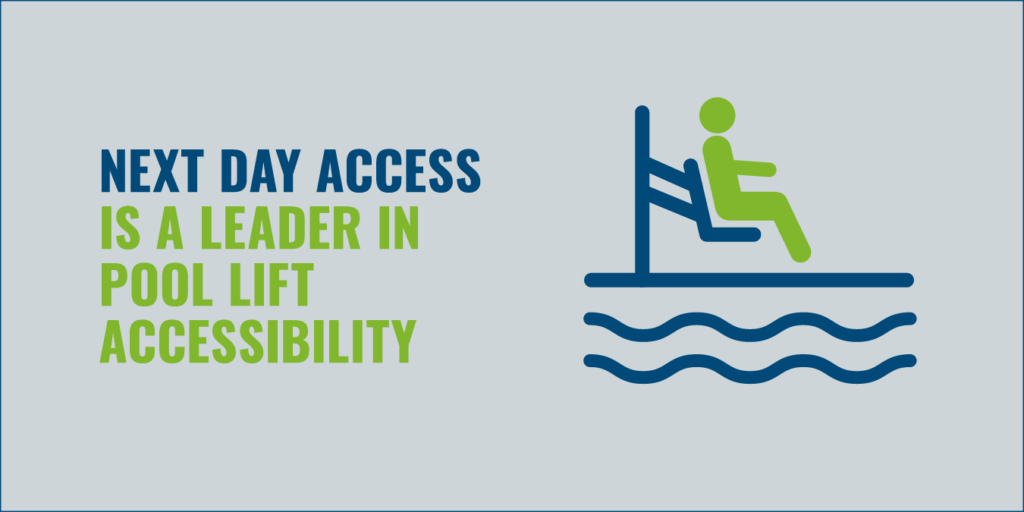
Participation in recreational activities like swimming is essential for everyone. In this article, Next Day Access discussed six different types of pool lifts, detailing how each contributes to accessibility and mobility for pool users. The piece highlighted how these lifts allow individuals of all mobility levels to enjoy the therapeutic and recreational benefits of swimming.
4. Installing Wheelchair Ramps
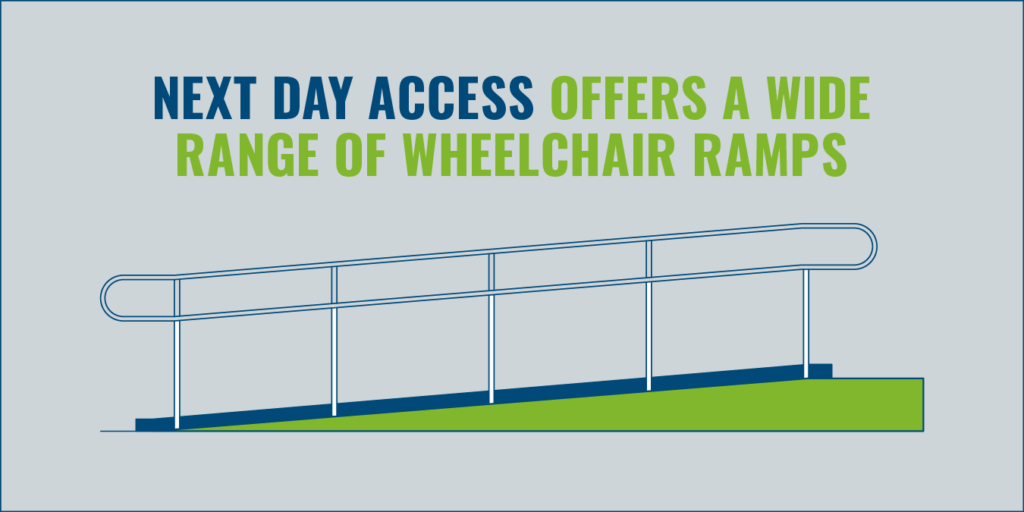
Next Day Access outlined five key reasons to install a wheelchair ramp, ranging from promoting independence to ensuring compliance with legal accessibility standards. The article also provided tips on selecting the right type of ramp and considerations for installation.
5. Guide to Ceiling Lifts
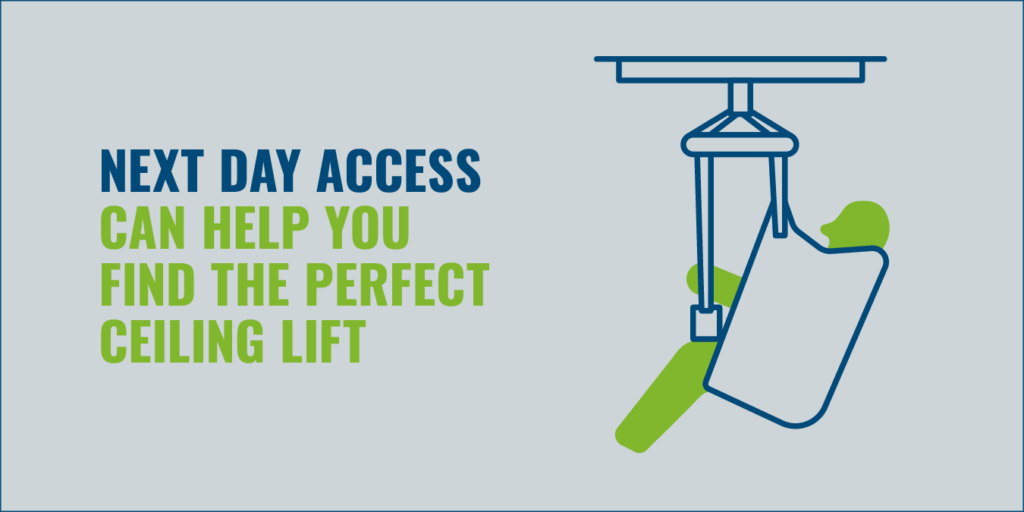
Ceiling lifts are an effective solution for safely transferring individuals with limited mobility. Next Day Access’s comprehensive article offered insights into how these lifts enhance mobility, safety, and independence, particularly in caregiving scenarios. The guide covered various types of ceiling lifts, installation requirements, and how they can be integrated into home settings.
6. Aging in Place Tips
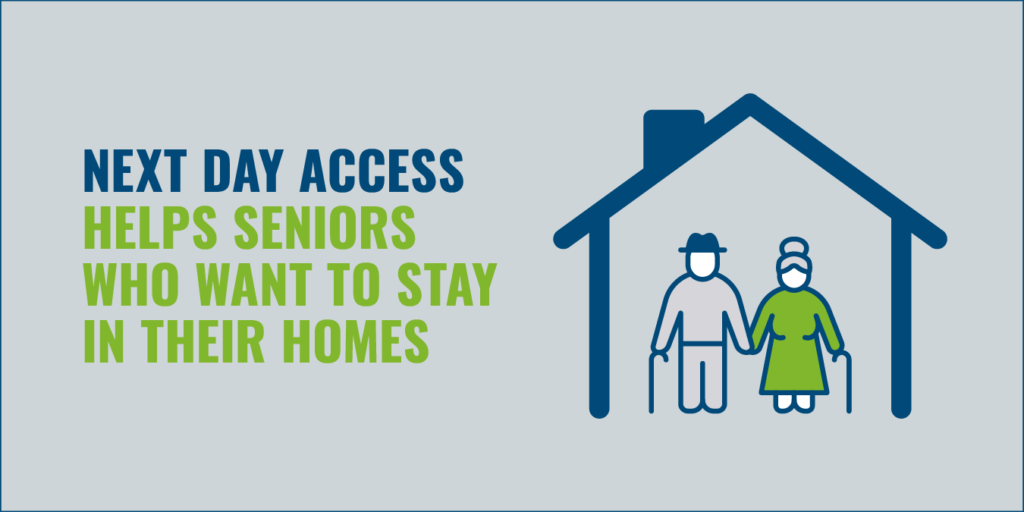
The amount of seniors who prefer to age in place has increased exponentially over the years. For seniors aiming to live independently at home, this article presented four practical tips for aging in place. The advice focused on how to adapt living spaces to senior needs, such as by modifying bathrooms for safety and ensuring easy access throughout the home. The article also touched on the importance of emergency preparedness and the role of technology in maintaining independence.
7. Winter Wheelchair Safety
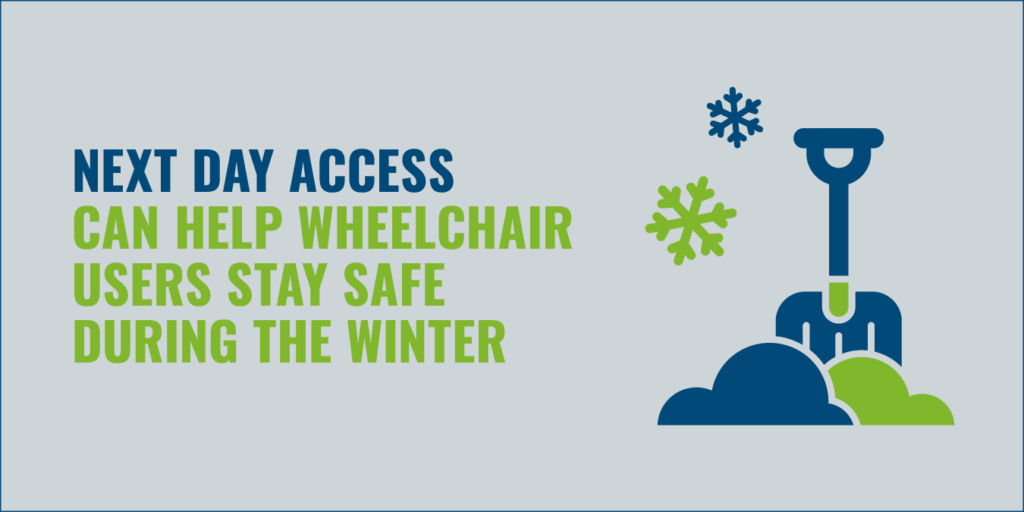
Navigating winter conditions can be challenging for wheelchair users. Next Day Access shared eight essential tips for safe wheelchair use during the colder months. This included advice on wheelchair maintenance, strategies for dealing with snow and ice, and the importance of proper clothing and accessories for warmth and visibility.
8. Benefits of Vertical Platform Lifts
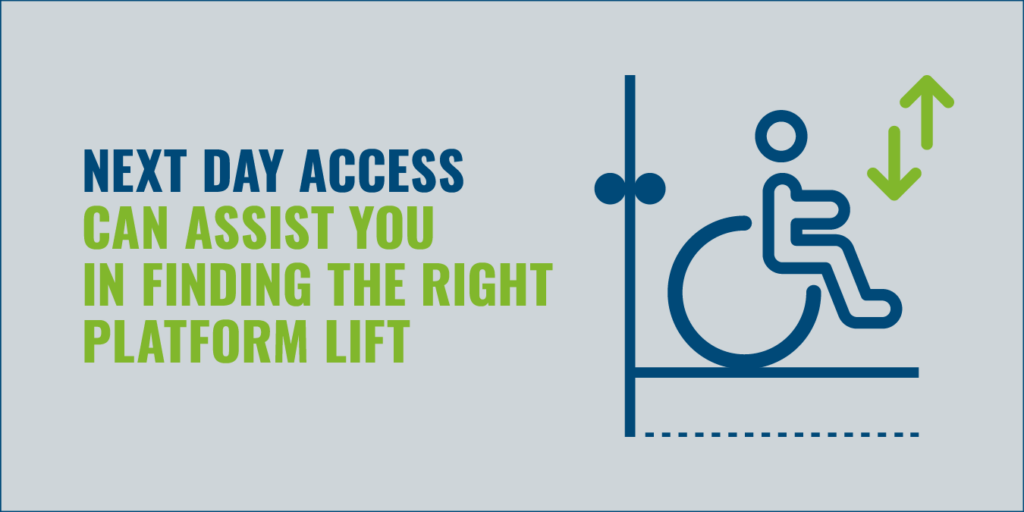
This article explored five ways vertical platform lifts can make life easier for wheelchair users. VPLs provide a practical solution for overcoming height barriers in homes and public spaces. The article discussed the flexibility of VPLs, their ease of use, and how they enhance the independence and accessibility of wheelchair users.
Spotlight on Mobility Solutions Techs
In 2023, Next Day Access proudly celebrated the exceptional contributions of its technicians, each embodying a high level of expertise and unwavering dedication in their respective locations. These skilled professionals have played a crucial role in elevating customer experiences and maintaining the highest standards of service in mobility solutions. Their commitment to excellence and customer satisfaction has not only enhanced the company’s reputation but also significantly impacted the lives of those they serve.
- Ross Week, North Houston
- Matthew Boncada, San Antonio
- Matthew Bowermaster, Central Ohio
- Chase Nelson, Minneapolis
Each of these technicians represents the heart and soul of Next Day Access’s mission, blending technical skill with a deep empathy for the individuals they assist. Their dedication and expertise not only reflect our company’s high standards but also profoundly impact the lives of those we serve. We extend our heartfelt congratulations to each of them for their achievements and for embodying the true spirit of service and commitment. Their stories, featured in our articles, are not just showcases of professional excellence but also inspiring examples of how individual dedication can make a real difference in the world of mobility solutions.
Community Contributions towards Mobility Independence in 2023
2023 was a year of significant milestones for various Next Day Access franchises, each marking their own unique contributions to the field of accessibility and mobility solutions. From innovative installations to community support, these franchises have made notable strides:
- Dallas-Celina’s First FlexStep Install: The Dallas-Celina franchise achieved a milestone with the first commercial FlexStep installation in Dallas, improving accessibility with this cutting-edge solution. FlexStep serves as a multi-purpose solution, converting from a regular staircase to a wheelchair lift at the push of a button. This installation not only enhanced the accessibility of the building but also set a precedent for future adaptive technologies in the region.
- AED Funds to Colorado Springs: In a notable move towards ensuring safety and emergency preparedness, Next Day Access Colorado Springs received funding for Automated External Defibrillators (AEDs). The AEDs are crucial in providing immediate assistance in the event of cardiac emergencies. The franchise used the PPACG-AAA funds to equip their staff with these life-saving devices in both their offices and vehicles for use during travel.
- Large Event Ramp Installation in North Houston: Highlighting their expertise in large-scale projects, North Houston Next Day Access installed an event ramp for the grand opening of the Omni PGA Frisco Resort. The custom-designed event ramp not only provided essential accessibility for the event but also highlighted the importance of inclusive design in public spaces.
Looking Ahead to 2024: Advancing Accessibility Solutions and Independence
As we close the chapter on an eventful 2023, Next Day Access remains committed to its mission to better the lives of those with mobility challenges. The year’s highlights are milestones that underscore our commitment to making the world a more accessible place.
Looking forward, we are filled with optimism and determination to continue breaking barriers and empowering individuals to live safely and independently in their homes. Our focus will be on harnessing emerging technologies and user-centered designs to enhance the functionality and comfort of living spaces for those with limited mobility and disabilities. We plan to expand our reach through strategic partnerships, community engagement, and awareness campaigns, ensuring that our solutions are accessible to a broader audience. Our commitment goes beyond providing equipment; it’s about nurturing an environment of independence and self-reliance, making every home a haven of comfort and safety.
Here’s to a 2024 filled with breakthroughs and advancements in mobility solutions, where every step we take brings us closer to a world where independence and accessibility are realities for all.





